#this house is extremely 1942
Text













455 Ash St., Winnipeg, Manitoba, Canada.
Built 1942.
#buildings#architecture#interiors#exteriors#1940s#1942#carpeted flooring#linoleum flooring#hardwood flooring#hex tile flooring#wall tiles#wood panelling#this house is extremely 1942#also I went to an estate sale in this neighborhood at a house that looked almost the exact same as this#except i know its not the same because that one had a weird double staircase and a big sunporch#but i wouldnt be surprised if they were built around the same time#it had the exact same kermit coloured carpeting#wallpaper#the wrought metal railing in the staircase inside is unusual but i think ive seen it in other midcentury houses too
7 notes
·
View notes
Text
The slow but incessant rain of anvils began in 1942.
George Macomber was walking from the trolley stop to his home in Great Falls (a name which many newspapers took advantage of in their lede selection) when a two-ton Bavarian fell out of the sky, landing squarely on top of poor George. He was Flattened instantly.
And, seconds later, he slid out from beneath the anvil, with a new height of one and a half millimeters. He had become, in an instant, the densest human being on the planet.
George Macomber happened to look up just before impact. This saved his life: because he was the first to ever be Flattened, the extremely-high-density intravenous fluid setup had not yet been invented, and no hospital could have kept him hydrated if his mouth were not accessible on his topside. (Iris Colelman invented the extremely-high-density intravenous setup in 1947, after hundreds had perished due to dehydration mere days after their Flattening.)
In another twist of good fortune, George Macomber had served as a signal officer in the Navy during the Great War and knew Morse code. While his vocal chords were capable only of producing an awful gurgling, he could still communicate by blinking - a trick that the doctors recognized quickly. And so he was able, painstakingly, to describe the characteristic sound of the anvil's descent: a terrifying descending whistle, like the slide-flute sound used for falling bombs in animated reels.
His story is not all a happy one, though. Some who are Flattened eventually pop back up to their former stature, but poor Mr. Macomber never did. While his medical condition remained stable, his wife divorced him and he had trouble finding employment. Seven years after his Flattening, he stopped eating or drinking. His final words, blinked to his nurse, are lost to history; she felt that she owed him her silence, even as she was fired and eventually prosecuted for letting him pass in this manner. The court asserted that she should have immobilized him and given him a high-density drip.
Only twenty-three days after George's Flattening, Irma Childress was returning from the bakery when a six-ton farrier's anvil hurtled down and Flattened her. She, too, was lucky enough that her mouth remained accessible. Her story is happier than George's - she was also the first person to pop back up to her normal height. It took her six months, and those must have been worse than George's, as she did not know Morse code - though she learned it and was proficient by her third Flattened month.
Even after regaining her former height, Irma remained wary of doors, stairs, and any place with high foot traffic. She sold her house in Los Angeles and moved out to an almond farm. She spoke to the press repeatedly and respectfully, and to this day is remembered as an early and passionate advocate for keeping the Flattened comfortable and helping them maintain their dignity.
Nobody has discovered where the anvils come from. They fall primarily in North America, most often in the southwest and midwest. Some suspect that they are flung by tornados, or some sort of awful prank, or military test flights. They are always of recent manufacture, indicated by a date stamp, but never a maker's mark.
The rate of Flattenings increased until the late 50's, at a peak of a bit over 100,000 in 1958. Today, the rain has slowed: there are usually between one and two thousand Flattenings a year. This incident rate has held steady since the early 1980's. This is unusual, since far fewer anvils are manufactured or used today than were in the 1940's. Of those Flattened, about half pop back to their previous height, usually between two months and a year after their initial Flattening.
It was difficult for the Flattened to connect with each other before modern video conferencing - those who were lucky enough to look up before their Flattening can see above themselves, but cannot see in front of themselves, and it is generally difficult for the Flattened to orient themselves otherwise. The Flattened of today generally stay on a table with a tablet above them, modified to use eye tracking for navigation. (Of course, this only really works with Flattened whose eyes are on their top- or bottom-sides; those with eyes facing forward, or whose faces were crushed into their bellies, can usually hear, but have a very hard time making themselves understood.) Regardless of orientation they are helped by dedicated care nurses who changes their IV fluids. These nurses are provided by Flattening insurance, offered by all major insurance providers; they often also take over some of the responsibilities the Flattened previously held, such as taking care of their children.
Sadly, the provisions surrounding Flattening insurance have changed in the last twenty years. Most nurses make less than 20% above minimum wage, and are afforded very little flexibility by the job, which requires them to attend the Flattened's household around the clock. They become very close with those they care for - in many cases they develop shorthands to make communication easier, such as diacritic modifications to the blinked Morse code.
While the Irma Childress Foundation is the leading voice for Flattening insurance reform, some long-term Flattened feel that their concerns are often not heard. They contend that the Foundation often bargains away provisions that could help some edge cases - especially those with limited communication capabilities.
Some of the Flattened have started pooling resources to buy land and build a city suited to their own needs, to wean themselves off of the marginal succor offered by the insurance system. We who stand tall must support them. We must afford them not only the dignity of doing our best not to step on them, but to self-determination. We must acknowledge that their lives are all unique and different. We must refuse, if you will pardon the pun, to flatten their experiences into one single narrative.
264 notes
·
View notes
Text
Flowers, Horses, and Miracles

Mick Schumacher x Fem!Reader
Short summary: You and Mick are happily married, however there is something missing.
Warnings: Not proof read, tooth rotting fluff, mentions of birth, pregnancy, infertility, bloodwork, sickness, daddy!mick
Word Count: 1942
Requested: no
The Schumacher ranch has always been one of your favorite places to visit. Life at the ranch was so much simpler than life back home in Switzerland. Wake up, go to the barns to see the horses, walk around the 5 acres of land, eat dinner around 6pm and then sit outside on the hay bales as you watch the sunset. Life couldn’t really get much better than that, right?
The entire property was absolutely stunning. To the left of the house were two barns that housed all of Gina’s horses as well as her horse riding equipment. Surrounding the barns was a huge piece of fenced in land that Gina used to practice her routines with her horses. She had two horses- one named billy and the other named gunnastepya, or gunna for short. She loved those horses more than anything in this world.
Past the barns was a beautiful field of flowers. This particular spot on the Schumacher property held a special place in your heart. Just two years ago it was the spot where you and Mick had said “I do.” It was the perfect little ceremony- only close friends and family attended. The two of you had both wanted a small, laid back wedding, and Corinna had done an amazing job at planning the perfect day for the two of you. She had planned out everything from the food and cake all the way down to making sure the ceremony happened right at sunset just how you had dreamed ever since you were a little girl. Everything had been absolutely perfect.
You and Mick were back in Texas for the USGP- one of your favorite races on the calendar. Mick had gone out with Gina to the competition stables so that she could show him one of her show horses. You decided to stay back at the ranch as you were pretty tired from the 14 hour plane ride it took to get here and it was already almost 6pm.
Since nobody else was home, you decided to make your way out to the flower field to watch the sunset. You sat down on the bench that was placed right in the middle of the field, and looked out ahead of you- the skyline giving you the perfect view of the sunset.
As you watched the sky turn different shades of orange and purple, you couldn’t help but think about everything that had happened since you and Mick got married here two years ago. Mick had gotten a seat in F1, you had gotten Angie, bought a house of your own together. In everyone’s eyes, you were a perfect couple who had it all- but that wasn’t always the case.
You and Mick had been trying to get pregnant for nearly a year now. Ever since you were little, you had always wanted to be a mom. There was nothing you wanted more in this world. So when you were told at the age of 13 that having a child was going to be extremely difficult, you were devastated. Part of you wanted to believe that the doctor was wrong, that maybe he had read the bloodwork wrong, surely you’d be able to have kids. But now that you were actively trying, you realized that the doctor was right after all.
Negative after negative had shown up on the little white sticks, each one hurting more than the last. You had tried everything google and your doctor had to offer- but nothing was working. You were mentally drained from it all. The poking and prodding to try to run tests to figure out what was wrong, every doctor telling you that they have no idea how to help you, Mick always being away- it was all too much for you. The two of you agreed three months ago to take a break from trying. As much as the idea was hard for you to wrap your mind around, you knew it was the best decision for your sake. You were getting nowhere and it was only upsetting you.
However, about 2 months after you stopped trying, you would finally get that positive test result you had been dreaming of.
The original plan was for you to go to Japan with Mick, but after coming down with what you thought was the stomach flu, you stayed at home all curled up in bed. When Mick had left for the airport, you had gone to the bathroom to see if you had any tests left just out of curiosity. Sure enough, you had one last test in a box at the bottom of your drawer. You decided to take the test, knowing full well that it would be negative just like the rest of them had been, only this time when you turned the test over, ‘Pregnant’ in big bold letters would appear on the tiny screen.
You couldn’t believe it. Everything that you had worked so hard for the past year had finally actually worked. You were going to be a mom. Mick was going to be a dad. None of it felt real. You had gone to the store and gotten another box of tests, taking all of them just to be sure. When all eight tests came back positive, you broke down into tears.
When Mick called you later that night after he had arrived in Japan, it took everything in you to not tell him that you were pregnant. With your upcoming trip to Texas, you knew that it would be the perfect spot to tell him the news.
Two arms wrapped around you, snapping you out of your thoughts. You jumped a little and looked up, only to find Mick smiling down at you. “You scared me, Liebling” you said with a small chuckle as you placed your hands on Mick’s arms.
“I didn’t mean to scare you, my love. Gina and I just got back. We couldn’t find you anywhere so I figured you’d be out here”
You smiled and took a deep breath, knowing this was going to be the perfect moment to share the special news with your husband. “Sit down, Mickie. I have something to tell you.”
Mick raised an eyebrow at you before sitting down beside you, his hands grabbing yours as he noticed they had begun to shake. “Honey, you’re shaking… what's going on?”
“Remember how I didn’t go to Japan because I was so sick?”
Mick nodded “yeah, of course I do… are you ok?”
You laughed a little and squeezed his hands tightly. “I had an extra test in the drawer, so I figured I would take it just in case.. I wasn’t expecting a positive but..” You pulled the test out of your pocket, holding it out to mick. “I’m pregnant” you said with a smile as you teared up a bit.
Mick looked down at the test, completely shocked to see the positive result. “You’re lying..”
You laughed a little and pulled out your phone. “Trust me, I thought my eyes were deceiving me at first, but I took eight more tests and they were all positive too” you said as you showed Mick the photo of all the tests laid out on the floor.
Mick looked at the photo in disbelief. “This is actually happening? I’m going to be a dad??”
“After all that hard work and all those doctor visits…” you said, tears forming in your eyes as you remembered how horrible the past year had been for the two of you.
Mick wiped your tears away “I know.. But all of that is behind us now.. We are going to have a baby!”
Eight Months Later
Bringing little Emilia home was surprisingly emotional for both you and Mick. Nine months ago, the two of you had lost all hope that you would get the chance to bring a little baby home. Now, nine months later, you were doing just that.
Mick had very gently taken Emilia out of her car seat before he sat down on the couch beside you. He looked down at his little girl in complete awe. The Schumacher genes were definitely strong. She had his eyes and nose, as well as his light blonde hair. She had his dimples and his lips. She was basically an exact replica of her father. As Emilia wrapped her tiny hand around Mick’s pointer finger, he couldn’t help but smile. “She’s absolutely perfect, meine liebe”
You smiled and rested your head on Mick’s shoulder. You had been pretty exhausted from the past couple of days at the hospital, so you were just glad to be home. “She definitely is. I don’t think anyone will ever question if she is your daughter, either. She is the spitting image of you, darling.”
Mick laughed a little and placed a kiss on the top of your head. “I can’t wait to take her to the ranch… to let her run around the flower field…”
You smiled at the idea of little Emilia running through the flower field one day. “Me neither…”
2 years later- the Schumacher ranch
“mama & papa?” little Emi called as she looked around for her parents.
Corinna watched as the little girl ran around the house looking for both you and Mick. When Emilia finally made her way over to Corinna, Corinna knelt down and pulled her into a hug. “Mama and papa are just outside in the flower field, honey. Have you seen the flower field yet?”
Emilia shook her head as she wrapped her little arms around Corinna’s arm.
Corinna smiled and picked emi up. “The flower field is a very magical place, liebling. Do you want to go see it?”
Emilia’s eyes went wide and she nodded, eager to see this magical flower field her Oma was talking about.
Corinna opened the back door and put Emilia down and pointed over to her parents. “There they are! Run along, go give them a big hug!”
Emilia giggled and ran over to her parents, wrapping her arms around her father’s leg. “Papa!! Up!!”
Mick laughed and picked Emilia up gently, holding her on his hip. “There you are! Did you sleep well, Liebling? You were napping for a while”
Emilia nodded, resting her head on Mick’s shoulder as she looked over at you. You placed a gentle kiss on Emilia’s cheek and smiled. “Did Oma let you out or are you finally big enough to reach the door handles?”
“Oma opened door for me! Said mama and papa were in magic field!!” she giggled.
You laughed at the thought of Corinna trying to convince little Emi that the field was magical. In a way, it was. This spot held a lot of memories over the past five years. It was definitely a magical place in your heart.
Mick put Emilia down and let go of her hand. “It is a pretty magical field, Emi. Do you want to see what it’s all about?”
Emilia nodded her head eagerly as she looked at you and Mick.
“Ok, you lead the way then my little adventurer” mick said with a smile as he grabbed your hand.
As the two of you walked behind Emilia, you couldn’t help but smile. “I can’t believe how grown up she is… it's bittersweet.”
Mick squeezed your hand tightly as he watched Emilia run up to a random flower and smell it, causing him to laugh a bit. “She might be growing up, but she will always be our little miracle.”
You smiled at your husband's words. You couldn’t agree more. “Our not so little, little miracle.”
#mick schumacher#mick schumacher fanfic#mick schumacher x reader#mick schumacher x you#mick schumacher fluff#formula 1 fanfic#f1 fanfic#formula 1 pov
428 notes
·
View notes
Text
Astro Observation: Commonalities in Serial Killer charts
DISCLAIMER: Any aspects, placements, signs, etc. that I mention here on out do not mean that people with one or all of these are, will become, or will act out serial killer tendencies. I am merely finding common aspects and placements in famous serial killers' charts to delve deeper into the reasons for their actions. As always, one aspect can be expressed in so many different ways. So, take everything with a grain of salt.
Subjects:
Ted Bundy 11/24/1946
Pedro Lopez 10/8/1948
John Wayne Gacy 3/17/1942
Harold Shipman 1/14/1946
Jeffrey Dahmer 5/21/1960
Charles Manson 11/12/1934
David Berkowitz 6/1/1953
Richard Ramirez 2/29/1960
Aileen Wuornos 2/29/1956
If we break down each person's chart by only personal planets, what sign comes up the most often?
Scorpio and Gemini are the signs that came up most frequently. Every serial killer in my list has Scorpio or Gemini in their charts except for Richard Ramirez and Aileen Wuornos.
Scorpio is not a big surprise since this is the sign ruled by Pluto. Death, taboo subjects, obsession, fascination with darker sides of life, control, and power are all very Scorpionic and Plutonian themes. Negative Scorpio traits include being vengeful, manipulative, aggressive, and insensitive. They have innate seductive energy that lures people in as well.
Gemini is a bit more surprising. However, Geminis are curious, clever, impulsive, moody, and good with words. They like to know private information about other people. They are also social creatures, so if they are lacking social connection, things can go south for them. Or, they can use their social skills to lure others to them. The duality of Geminis could go to the extremes; two different personalities in one.
The next most frequent sign is Aquarius. Richard Ramirez and Aileen Wuornos have Aquarius in their charts.
Not a huge surprise with Aquarius. Negative Aquarius energy could mean detachment from emotions, lack of empathy, extreme rebelliousness, pessimism, and coldness. They can be unpredictable and have a superiority complex as well.
The sign that did not appear at all among personal planets is Leo. Taurus and Cancer come in a close second with only one each.
By modality? Not much difference here, but Mutable signs are in the lead. Mutable (17), Fixed (14), Cardinal (13)
By element? Air and Water came up the most with 15 and 13 respectively. Fire and Earth tied at 8 each.
Most common aspect?
Neptune - Pluto (8/9)
This is a generational aspect so 8 out of the 9 have Neptune sextile Pluto, except for Charles Manson. This aspect lasts from the 1940s to the 2030s (Charles Manson was born earlier in 1934). Because this aspect includes such a wide range of people, it does not have a huge effect on our serial killer study. I also do not know their birth times, so I do not even know which houses Neptune and Pluto land in their charts.
Venus - Mars (7/9)
Venus-Mars aspects are typically seen as attractive aspects since they join the planet of love, beauty, and sensuality with the planet of action, physicality, and aggression. From a negative perspective, Venus-Mars can also mean a love for aggression, sexual frustration, and an imbalance between wanting to be accepted/acceptable and wanting to act out in self-interest. May want love and affection, but either in an unconventional way or a part of them fights against or feels uncomfortable with this desire. (Ted Bundy and Jeffrey Dahmer are the only two who do not have this aspect; Ted Bundy was known to be attractive to a lot of people and had a certain charm; he does has Venus square Pluto.)
Moon - Uranus (7/9)
Once again, because I do not know birth times, the Moon placements are not accurate. However, I still thought this might be good to look at since there are so many of them. Moon-Uranus gives an unpredictable and disruptive nature to emotions. Their emotional lives may feel unstable, and strong emotions may rise suddenly. They could be rebellious and may feel restless frequently; may desire to separate themselves from others. Childhood could have been unstable/unaffectionate, and these people could lack slow, routine comfort. (John Wayne Gacy and David Berkowitz are the only two who do not have this aspect; David Berkowitz does have Aquarius Moon, which is different from Moon-Uranus but could give a similar flavor)
Sun - Saturn (6/9)
There is self-restricting energy that comes with Sun-Saturn aspects. In a negative light, this aspect shows seriousness, self-denial, lacking a strong sense of self, insecurity, and taking yourself too seriously. This could also show that people deny the Sun-Saturn people their self-expression and acceptance. (Pedro Lopez, Jeffrey Dahmer, and David Berkowitz are the only three who do not have this aspect)
Mars - Neptune (6/9)
Mars-Neptune can be spiritual, elusive, sensitive, imaginative, and dependent. In the realm of serial killers, spirituality can be taken to the extreme; think cult activity, believing a higher power is making you do bad things, etc. (Charles Manson has Mars conjunct Neptune, and David Berkowitz has Mars trine Neptune.) Serial killers can blend in and play in the shadows too, which is Neptunian. They can also assume a different persona, act like a completely different person. Many of these killers were seen as sensitive, shy, and/or polite during the day or in childhood. They can be impressionable; could have been heavily affected by their childhood environments, and acted out physically by imitation or by lashing out. (Pedro Lopez, Harold Shipman, and Jeffrey Dahmer are the only three that do not have this aspect.)
The most aspected planets are in this order:
Saturn (47)
Neptune (46)
Pluto (46)
Moon (46; birth times not accurate)
Mars (44)
Jupiter (42)
Venus (37)
Chiron (36)
Uranus (35)
Mercury (34)
Sun (32)
North Node (21)
South Node (20)
Closing Thoughts
When it comes to serial killers, I see two trains of thought. There is an intense fight between two opposing sides in one person. There is also an extreme detachment from themselves and other people. Saturn is the most aspected planet among these 9 charts, which speaks volumes astrologically about what can push someone to that level of violence and anger. Control, denial, and detachment are huge themes. There is absolutely no excuse for these serial killers and what they did to their victims and the victims' families and loved ones. But it is important to know that most, if not all of them, were denied love and affection in childhood. They were controlled or neglected by authority figures, whether or not this was perceived or for real. And they developed the ability to detach from themselves and other people. They then exert control over their victims and literally deny them their lives. During the act, they detach from any societal morals and ethics and any part of themselves that could possibly say that they shouldn't go through with their violent thoughts.
When there is discomfort within one's self, it builds up and, over time, this pent-up frustration and anger has to come out somehow. This is oftentimes through aggression (Mars) that is ignited by strong emotions (Moon). Serial killers take this to another level (violence, violent emotions)
It is also interesting to see Jupiter within the top half of the list. Serial killers tend to have strong ideologies/principles about the world, people, and everything that is wrong with both. This can also show an urge to expand and inflict their ideologies onto other people.
This is my little "study" on some famous serial killers. Kind of creeping me out right now so...
Everyone, take care of yourselves and be safe!!!
#astrology#astrology blog#astrology post#serial killer astrology#serial killer birth charts#birth charts#natal charts#ted bundy#pedro lopez#john wayne gacy#harold shipman#jeffrey dahmer#charles manson#david berkowitz#richard ramirez#the night stalker#aileen wuornos#the son of sam#astro observations#astrology observations
279 notes
·
View notes
Text
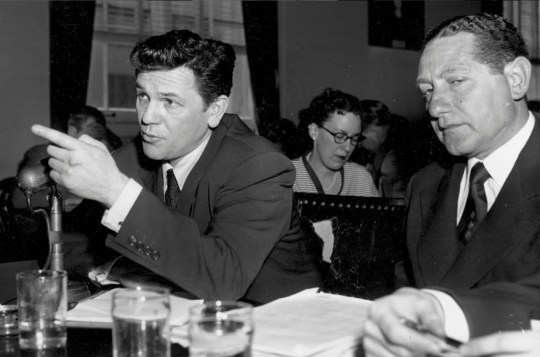
A Golden Boy…a TRUE American Hero.
Adam McKay’s DEATH ON THE LOT podcast, episode 3 features John Garfield unjust framing by HUAC.
The guests on the podcast are ALL the people I would have selected to interview: daughter, actor and artist, Julie Garfield; authors, Robert Nott and Isaac Butler, and also a surprise—actor, Lee Grant one of the few remaining to be blacklisted in Hollywood in the 50’s. Excellent commentary by all. Good on you, Adam McKay and team!

The Red-Baiting of a Golden Boy | Episode 3 | A new generation of actors questioned the status quo; a rattled establishment fought back; dire consequences ensued. We’re talking John Garfield, Hollywood’s first method actor. LISTEN

"When I was originally requested to appear before the committee, I said that I would answer all questions, fully and without any reservations, and that is what I have done. I have nothing to be ashamed of and nothing to hide. My life is an open book. I was glad to appear before you and talk with you. I am no Red. I am no pink. I am no fellow traveler. I am a Democrat by politics, a liberal by inclination, and a loyal citizen of this country by every act of my life.”
—John Garfield’s statement before House Un-American Activites Committee (HUAC) on April 23, 1951.
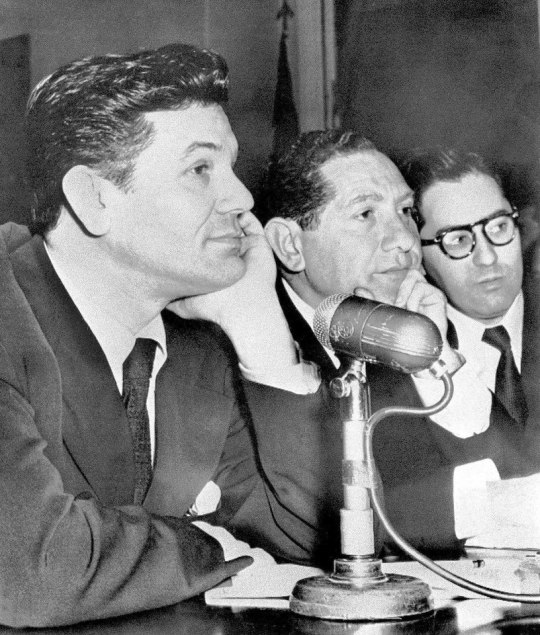
All Julie wanted to do was what he did best: ACT. They took everything away from him. Despite that, he held his street cred. He gave away not a single name during his testimony. No ratting on friends and associates from Julie. Badass.
The others involved: Shameful. Shocking that Julie’s life and livelihood could be toyed with so heartlessly and carelessly. This was a man who did so much for his country. How could the ruthless, power hungry politicians ignore these examples of John Garfield’s patriotism?

During WWII, he cofounded—after bringing the suggestion to Bette Davis—the Hollywood Canteen. The Canteen operated from October 3, 1942 through November 22, 1945 (Thanksgiving Day), as a club offering free of charge: food, dancing and entertainment for service personnel usually on their way overseas. Nearly four million people were served as they were serving us!
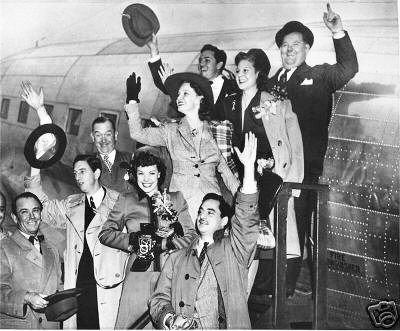
The Hollywood Victory Caravan included Eddie Dowling, President of Camp Shows, Ray Bolger, Mitzi Mayfair, Louis Polanski, Stan Laurel, Oliver Hardy, Jane Pickens, Benay Venuta, and John Garfield serving as master of ceremonies. One of the first USO tours, Flying Showboat revue toured U.S. military bases in the Caribbean. These celebrities performed under some extremely trying conditions, as the weather was brutally hot and many of the camps were not equipped to host theatrical performances. The show must go on (!) and it did.
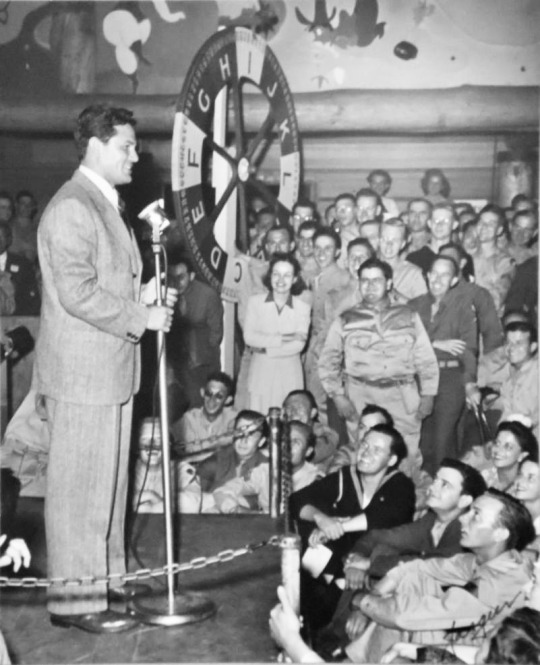
Julie running an event at the Canteen.
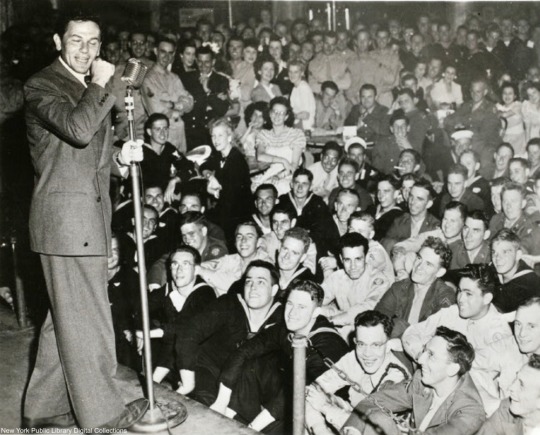
Julie entertains the troops! Audience members at the Canteen filled the hall.
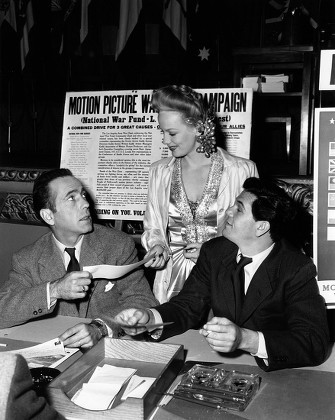
Here he is selling War Bonds to support WWII efforts with Humphrey Bogart in 1943. Not sure who is pictured with them.

Julie championed the story of real life marine hero, Al Schmid bringing it to the screen in PRIDE OF THE MARINES. He read about the hero in LIFE magazine and brought the idea for a film to the studio. He stayed with Sargent Schmid and his wife for a couple weeks to portray the man respectfully and honesty.
#john garfield#death on the lot#adam mckay#huac witch hunt#house un-American activities committee#Julie Garfield#Robert nott#Isaac butler#Lee grant#hollywood canteen#bette davis#al schmid#pride of the marines#humphrey bogart#Flying Showboat#hollywood victory caravan#uso tours#wwii
16 notes
·
View notes
Text
Reflections on my Universal Horror marathon
It is November 1st, 2023. As anyone can tell after being around me for, I don't know, five minutes, I am a huge horror queen. For my birthday this year, I got a big book on Universal horror, filled with production photos, background, trivia, actor bios, etc. I decided to use this book as a sort of guided reading list, where I would marathon all of the movies discussed in the book and read along. When I was first seriously doing a deep dive into horror in 2018, the classic 30s horror franchises were some of the first that I chose to get into, and so it had been five years or so since I had seen some of my old monster friends. (And many of the movies on this list I had not seen before!) I was excited for this project and decided to start it at 99 days until Halloween; I had found a Sam (1) "Countdown to Halloween" clock that counted from 99 days to 0 days last year, at the Spirit Halloween clearence sale. (2) So, 99 days to do a book's worth of movies—how hard could it be?
(1) from Trick r Treat, 2007
(2) He's currently sitting on my bedside table, at 0 days left!
Turns out, it was rather difficult! I hadn't expected the book to have so many entries in it.
The entire list of films that I did is as follows, broken down by chapter:
Silent Era (5 films): The Hunchback of Notre Dame 1923, The Phantom of the Opera 1925, The Phantom of the Opera 1943, The Cat and the Canary 1927, The Man Who Laughs 1928
Dracula (5 films): Dracula 1931, Drácula 1931, Dracula's Daughter 1936, Son of Dracula 1943, House of Dracula 1945
Frankenstein (4): Frankenstein 1931, Bride of Frankenstein 1935, Son of Frankenstein 1939, Ghost of Frankenstein 1942
The Wolf Man (5): Werewolf of London 1935, The Wolf Man 1941, Frankenstein Meets The Wolf Man 1943, House of Frankenstein 1944, She-Wolf of London 1946
The Mummy (5): The Mummy, The Mummy's Hand, The Mummy's Tomb, The Mummy's Ghost, The Mummy's Curse
The Invisible Man (5): The Invisible Man 1933, The Invisible Man Returns 1940, The Invisible Woman 1941, Invisible Agent 1942, The Invisible Man's Revenge 1944
The Gill Man (3): Creature From the Black Lagoon 1954, Revenge of the Creature 1955, The Creature Walks Among Us 1955
"Universal's Lesser Known Monsters" (3+3+6): Paula the Ape Woman—Captive Wild Woman 1943, Jungle Woman 1944, The Jungle Captive 1945; The Creeper—Pearl of Death 1944, House of Horrors 1946, The Brute Man 1946; The Inner Sanctum Mystery Series—Calling Dr Death 1943, Weird Woman 1944, Dead Man's Eyes 1944, The Frozen Ghost 1944, Strange Confession 1945, Pillow of Death 1945
Non-serial horror (14): The Old Dark House 1932, Murders in the Rue Morgue 1932, The Black Cat 1934, The Raven 1935, Black Friday 1940, Man-Made Monster 1941, Horror Island 1941, Night Monster 1942, The Mad Ghoul 1943, The Strange Door 1951, The Black Castle 1952, Tarantula 1955, The Mole People 1956, Monster on the Campus 1958
That's 68 movies in 99 days by my reckoning. I also only did these on the nights that Mack worked or was dancing, which further tightened the number of days that I had. Good thing they were each about 60 minutes. I could never do this in the modern era where everyone bloats their movies to an absurd degree.
See, I thought it would be something small, with like... 30 movies in 99 days. I didn't expect all of this! Maybe I should have checked how many movies that would be before solidly deciding to do this challenge, eh? And it's not even allll of the Universal horror movies—Lugosi and Karloff did like six "duet" movies like The Raven and The Black Cat, but the book only focused on two and briefly name-dropped the others. By the mid-October, when I was in the final chapter, I was doing two or three movies per night, and it was quite a stressful thing, not knowing how I'd get it all to line up before Mack took his Halloweek vacation!
But I did it. I'm extremely proud that I stuck to it. And also, I will absolutely not do it again! Perhaps in another five years I'll have a craving for the Universal horror movies again, and I'll do my favourite 30 or so, but this insanity will not be repeated, or at least not with this time scale.
Anyway. Here are some things I wish to talk about:
Appreciating Silent Film
The silent era has always been one that I've wanted to get into, but I've never known how exactly to break into it. I've done a few silent movies before—if you're looking for a rec, Häxan from 1923 is a very disturbing and deeply effective look at medieval witchcraft—but I never felt like I had a sure footing in it.
And, well, the book starts at 1923 with Hunchback, no easing into it. And, turns out, it was mostly fine!
The 1925 Phantom was stunning. I love the tinted vibes of the silent era, and this film had a rare Technicolor sequence during the Masquerade bit where all the costumes were in colour, and it was amazing to see. There's a 19...29, I think?, scored version, which is what I watched, and the score pops off.
The 1927 Cat and the Canary ended up as one of my favourites of the whole marathon—there's no scoring option for this, but it's so fun I didn't care. The story revolves around a will reading on a dark and stormy night, a will reading, and a sudden heiress who has to prove her sanity as a condition of the will, all while an antagonistic family and a killer are loose in the mansion. It's a horror-comedy, and it is such a good time. I had rated it 5/5 on letterboxd years ago, but I had forgotten why, and I quickly rediscovered the reason!
So yeah, I got a couple silents to add to my résumé, next to stuff like Häxan and the typical Dr Caligari.
2. The Evolution of What Horror Is
One of my favourite things to think about and consider is what society's horror fixation is in a given era and how it all ties together in a sort of greater historiography.
This marathon covers the 20s through the late 50s, with most of it happening in the 30s and 40s. There's a pretty clear chain of where the focus goes in these—in the 20s, it's a lot of classic adaptations that have a gruesome element but which may not be yknow categorical Genre Horror as we recognise it and label it on a dvd box. The 30s explore the more typical folk myths and superstitions, such as vampires and werewolves; if there is science, it is either rather crude or primitive (Frankenstein using lightning bolts and sewing pieces of body together) or even has a mystical connection (Werewolf of London's Tibetan miracle flower—often this mysticism can unfortunately veer into Orientalist tropes :/). The 40s, and particularly around 1945 with the atomic bomb, the old superstitions lose steam and modern science begins to catch up, to the point that the 50s horror movies are, essentially, all a world away in terms of science—I mean, they try behavioural therapy on the Creature from the Black Lagoon in Revenge of the Creature! The later "Monster Mash" movies where all of the classic monsters join up have them turning to modern science to solve their problems—I believe it's in House of Dracula where the Wolf Man is legitimately ""cured"" by a cranial surgery based on some science, and Dracula gets cured by looking at the particulates in his blood and stuff. Anyway, continuing in the 50s, There's all this talk of atoms and radiation and such, and it's such a strong blend of science fiction and horror, such that the two genres are practically constant bedmates for this era. (Contrary to a popular tumblr post comparing Godzilla to 50s superhero comics, radiation actually did inspire a lot of monsters in America too; you just needed to know where to look, and it's here, in the giant Creature Features, where Godzilla would fit right in.)
I remember shortly after House of Dracula, I was talking to Mack, and I essentially launched into a ten minute lecture about this stuff, how it all ties into what was happening in society and whatnot. I have so much to say, but I won't word vomit it here.
3. These Movies Said, Continuity WHO?
One of the recurrent jokes I had while watching these movies is that the writers were clearly not interested in keeping continuity between films. There are two instances that I internally screamed at because of how insane they were—(1) In House of Frankenstein, Dracula is destroyed in the sunlight, The Wolf Man is shot by a silver bullet and dies, and the Frankenstein creature sinks into quicksand and disappears. Most of the plot of House of Frankenstein is quickly retold by the mad scientist character of House of Dracula; he leaves out the Wolf Man's death, probably because it would upset the Wolf Man, to whom he is speaking. Dracula is also back without explanation. (2) The Mummy's Ghost is set in Connecticut; they are very emphatic that they are in Connecticut. It is said over and over. At the end, the Mummy is chased into the swamp of Connecticut (yknow, the famous swamps of Connecticut) —at the very beginning of The Mummy's Curse, they point to a stretch of swampland, say that THIS is where Kharis sank all those years ago (it was 6 months in real time btw), and that he should still be there. This movie is set in the bayou of Louisiana, with a cheerful barkeep woman singing in French to evoke the whole "Cajun French" world. How Kharis went from Connecticut to "this is the exact spot where he fell" in Louisiana? Never mentioned.
Additionally, in one of the later Frankensteins, Ygor has his brain transplanted into the Frankenstein Monster in a scheme; Ygor-Frankenstein Monster triumphantly turns to the assembled characters and speaks to them, telling them how he tricked them and won. In the next movie, which I believe is Meets The Wolf Man, the Frankenstein Monster is a mute brute once more, and Ygor does not exist anymore. Now, the wildest thing is that this is not the writers cherrypicking what is canon and what is not—no, in the script the Frankenstein Monster-Ygor was to have deep conversations with the Wolf Man, and this was recorded. It was only in post-production that all of this was struck; all those scenes were either tossed or edited down. Apparently there are visuals of those scenes in the movie where you can watch the FM's mouth move, but the audio has been replaced with music or sound effects. Wild stuff.
There's more, plenty more, but you get the picture. I suppose in a world without home video, where your audience may not have seen the previous films or may not remember them well, you can convince them of anything and continuity matters less.
4. Some of these movies destroyed my will to go on (with the marathon)
Overall, I greatly enjoyed my time with this marathon. I found most of these movies to be very interesting and illuminating.
But there are two series in this that just crushed my spirit—The Mummy and Paula the Ape Woman. They were so awful that it made me not want to keep going.
The Mummy is just such a confused mess; the worst time I had was with The Mummy's Tomb. Tomb is the third movie in the series, so of course there's some catch-up that has to be done to get the audience up to speed. (They all do it, it's normal.) Now, this is a 60 minute movie. Tomb begins with a TWELVE MINUTE "recap" of the first two movies, using a flashback to show scenes from the old movies—all the while narrating them to construct a new story of what supposedly happened and wildly making up new stuff that directly contradicts what is visible on screen. TWELVE MINUTES out of SIXTY, one fifth of the movie, is just incredibly out of context scenes to do whatever the writers want.
And that's not even getting into the cultural sensitivity discussions around these movies, because girl........... girl. It's rough on that front, to say the least. (They reuse an Incan temple, if I remember right, as an Egyptian tomb in the last one, I think it was, and you can clearly see Mesoamerican imagery all over the walls, but they're yelling about pharoahs and stuff. And that's the tip of the iceberg.)
Paula the Ape Woman is about an ape who gets a brain and blood transplant and becomes a real woman, or at least temporarily. Now, audience, given that this an early 40s movie... do you think this uncontrollable, animalistic beast of a woman is going to be white or no? :////
The Paula movies just need to be forgotten. Not every Universal horror movie is a lost gem in the sands of time. Let's just say that.
5. James Whale, Lon Chaney Jr, and thoughts on recurring names and faces
With the studio system firmly in place for most of this marathon's concerned eras, there are many repeating names throughout the movies. It became something of a scavenger hunt to find "Gowns by Vera West" in the title credits of most movies—according to letterboxd, I think I hit 37 movies with her credited on wardrobe.
Some of these repeating names I grew to really like. James Whale really is among the greats, isn't he? Bride of Frankenstein is nothing short of a masterpiece, and his other work (especially The Old Dark House) is great. I would love to do a deeper dive just into his other works. He seems so fascinating! And he was gay, and apparently very very open about it.
A name I came to dislike, unexpectedly really, was Lon Chaney Jr, most known for The Wolf Man. I went in with a higher opinion of him, only knowing him from The Wolf Man; he eventually became a bit of a golden boy on the Universal horror sets, and so he got into a ton of different projects. And boy, did he ever only play one character across everything! He's extremely good at it, but he only ever played a sad, pathetic little man who is overwhelmed by the weight of the world! We get it, dude. Play a different character!
6. Conclusions
This is getting away from me, so I'll wrap this up. Thank you if you even skimmed this far!
I really did enjoy this marathon. It was stressful, a little, but a fun stress, all things considered.
Rapidshot overall favs: The Bride of Frankenstein, the Cat and the Canary, Revenge of the Creature, Dracula, The Old Dark House, Tarantula, 1925's Phantom of the Opera, the Raven.
Rapid boots: The Mummy franchise, Paula the Ape Woman series, She-Wolf of London, the Black Cat, Ghost of Frankenstein.
I love this era of horror: It's almost a cosy horror to me, with giant fog machines, goofy big analog science contraptions, and painted backdrops (you can see the painted backdrops and their flatness during the early 30s ones especially). I like that there are fewer cuts compared to the modern day: They hold the camera on the actors, and often the camera is not on a close-up, giving plenty of time for interesting physicality. It almost feels staged or traditionally theatrical in a way that modern movies do not. (Which makes sense, as the earlier writers and directors and actors all came from and routinely did theatre. Lugosi got Dracula after he did the stage version of it.) Many of them are very comfortable feeling, and they're short too!
I don't think I could do another grand tour like this again for years, at mininum,—and I won't revisit Paula and probably not The Mummy—but I do want to revisit it more than I have in the last few years. These monsters are my FRIENDS!
Anyway. Stan Boris Karloff, James Whale, and especially Elsa Lanchester
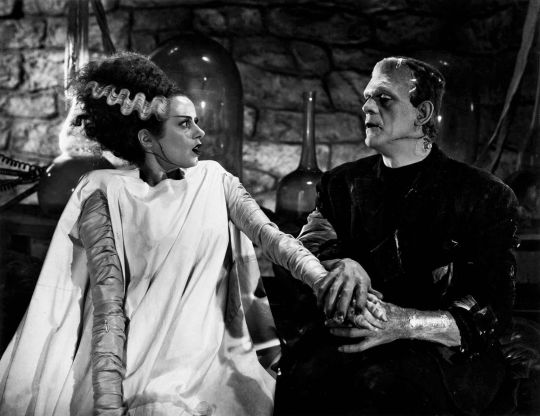
#my universal horror marathon#thank you to anyone who reads#i mostly just wanted to write this up for me
6 notes
·
View notes
Text
CURRENT FANDOMS
-- Alphabetised by Title --
★ No need to limit yourself to what's here! This is more of a formality than anything concrete.
Novels:
Alice's Adventures in Wonderland
Dune
Durarara!!
The Great Gatsby
The Hobbit
The Hunger Games
IT
The Lord of the Rings
Mortal Engines
No Country for Old Men
Percy Jackson & the Olympians
Ready Player One
The Silence of the Lambs
A Song of Ice and Fire
Star Wars: Dark Disciple
Comics & Manga:
Beastars
Blue Exorcist
Boku no Hero Academia
Death Note
Demon Slayer: Kimetsu no Yaiba
Disney Duck Comics
Johnny the Homicidal Maniac
Kamonohashi Ron no Kindan Suiri
Scott Pilgrim
Soul Eater
Tokyo Ghoul
The Transformers: More than Meets the Eye
Watchmen
Films:
Accepted (2006)
The Adventures of Sharkboy and Lavagirl
Airplane!
The Angry Birds Movie
Argylle
Austin Powers
Back to the Future
The Bad Guys (2022)
Bad Ronald (1974)
Bad Taste (1987)
Balto (1995)
Bambi (1942)
Bambi II (2006)
The Banana Splits Movie
Barbie (2023)
Batman Begins
Batman Forever
The Beekeeper (2024)
Beetlejuice (1988)
Beetlejuice Beetlejuice
Behind the Mask: The Rise of Leslie Vernon
Big Hero 6
Black Christmas (1974)
The Black Phone
The Book of Life
Brave (2012)
Brother Bear
A Bug's Life
Bullet Train (2022)
Cars (2006)
Chickenhare and the Hamster of Darkness
Chicken Little
Cloudy with a Chance of Meatballs
Con Air (1997)
Coneheads
Coraline
Corpse Bride
Cowboys & Aliens
Deadpool (2016)
Deadpool & Wolverine
Despicable Me
Detective Pikachu
Diary of a Wimpy Kid (2010)
Dracula: Dead and Loving It
Dungeons & Dragons: Honor Among Thieves
Elemental
The Emperor's New Groove
Encanto
Enchanted
Exchange Student Zero
An Extremely Goofy Movie
Fantastic Mr. Fox
Fast & Furious Saga
Fear Street Trilogy (2021)
FernGully: The Last Rainforest
Ferris Bueller's Day Off
Five Nights at Freddy's (2023)
Free Guy (2020)
Frozen (2013)
Galaxy Quest (1999)
Ghost Rider (2007)
Glass Onion
Godzilla
A Goofy Movie
Grease (1978)
Guillermo del Toro's Pinocchio
The Happytime Murders
Haunted Mansion
Hellboy (2004)
Hellboy II: The Golden Army
Hercules (1997)
The Hobbit Trilogy
Hocus Pocus
Holes (2003)
Home (2015)
Home Alone (1990)
Hotel Transylvania
Howard the Duck (1986)
How to Train Your Dragon
The Hunger Games
Ice Age
The Incredibles
Inside Out
IT (2017)
John Wick
The Jungle Book (1967)
Jurassic Park
Jurassic World
Killer Klowns from Outer Space
Knives Out
Kung Fu Panda
Legally Blonde
The LEGO Batman Movie
The LEGO Movie
The LEGO Ninjago Movie
The Lego Star Wars Holiday Special
LEGO Star Wars Summer Vacation
Lift (2024)
Lilo & Stitch
The Lion King (1994)
The Lion King II: Simba's Pride
Little Shop of Horrors (1986)
The Lorax (2012)
The Lord of the Rings Trilogy
Luca (2021)
Luck (2022)
Mad Max Saga
The Man from U.N.C.L.E.
Mean Girls (2004)
Meet the Feebles
The Meg
Meg 2: The Trench
Megamind
Minions: The Rise of Gru
Mission: Impossible
Miss Peregrine's Home for Peculiar Children
The Mitchells vs. the Machines
Monkey King Reborn
Monsters, Inc.
Monsters University
Monsters vs. Aliens
Mulan (1998)
My Little Pony: A New Generation
My Little Pony: The Movie (2017)
Napoleon Dynamite
National Lampoon's Christmas Vacation
Night at the Museum
The Nightmare Before Christmas
No Country for Old Men
NOPE (2022)
Onward
Open Season (2006)
Osmosis Jones
Over the Hedge
Pacific Rim
Paddington
Penguins of Madagascar (2014)
The Phantom of the Opera (2004)
Pirates of the Caribbean
Planet of the Apes
Puss in Boots: The Last Wish
Rango
Ready Player One (2018)
Renfield
Return to Oz
Rio (2011)
Rise of the Guardians (2012)
Road House
The Road to El Dorado
RoboCop (1987)
Robots (2005)
Rock Dog
Ron's Gone Wrong
Scott Pilgrim vs. the World
Shark Tale
Shaun of the Dead
Shrek
Sing (2016 & 2021)
Small Soldiers (1998)
Sonic the Hedgehog
Spaceballs
Spaceballs 2: The Search for More Money
Space Jam
Spider-Verse Trilogy
Spies in Disguise
Star Trek
Star Wars
Storks (2016)
The Suicide Squad (2021)
The Super Mario Bros. Movie
Surf's Up
The Terminator
Titanic (1997)
Toy Story
Treasure Planet (2002)
Trolls (2016)
Tucker & Dale vs. Evil
Turning Red
Vivo (2021)
Whiplash
Who Framed Roger Rabbit
Willy Wonka & the Chocolate Factory
Wreck-It Ralph
X-Men
“ASTEROID CITY”
TV Series & Web Series:
The Adventures of Sam & Max: Freelance Police
The Adventures of Teddy Ruxpin
Adventure Time
Alvin and the Chipmunks
The Amazing World of Gumball
American Dad!
American Dragon: Jake Long
American Gods
Amphibia
Animaniacs
Aqua Teen Hunger Force
Ash vs Evil Dead
Barry (HBO)
Bates Motel
The Batman (2004)
Batman: The Animated Series
Better Call Saul
Big City Greens
Bigtop Burger
Black Clover
Bluey
Bob's Burgers
BoJack Horseman
Breaking Bad
Buzz Lightyear of Star Command
Camp Camp
Carmen Sandiego
Cars on the Road
Clone High
Codename: Kids Next Door
Count Duckula
Courage the Cowardly Dog
The Cuphead Show!
Danger Mouse
Danny Phantom
Dan Vs.
Darkwing Duck
The Devil Is a Part-Timer!
Dexter's Laboratory
Dinosaurs
Diriliş: Ertuğrul
Doctor Who
Dogs in Space
Don't Hug Me I'm Scared
Dorohedoro
Duck Dodgers
DuckTales (1987 & 2017)
Exchange Student Zero
Freakazoid!
Frieren: Beyond Journey's End
Futurama
Game of Thrones
Gargoyles
Good Omens
Goosebumps
Gotham
Gravity Falls
Green Eggs and Ham (Netflix Series)
Gregory Horror Show
The Grim Adventures of Billy & Mandy
Grimm
Happy Tree Friends
Harley Quinn
Hazbin Hotel
Helluva Boss
Hero: 108
House of the Dragon
Inside Job (2021)
Inspector Gadget (1983)
Invader ZIM
Kim Possible
King of the Hill
The Lion Guard
Looney Tunes
The Looney Tunes Show
Love, Death & Robots
Making Fiends
The Mandela Catalogue
Max Headroom
the middle.
Mighty Ducks: The Animated Series
Milo Murphy's Law
Mob Psycho 100
Modern Family
Monkie Kid
Monsters at Work
My Little Pony: Friendship Is Magic
Mystery Skulls Animated
Ninjago: Masters of Spinjitzu
The Office
OK K.O.! Let's Be Heroes
Our Flag Means Death
Overlord
The Owl House
Peaky Blinders
The Penguins of Madagascar
Phineas and Ferb
Pinky and the Brain
Popee the Performer
The Powerpuff Girls
Primal
The Proud Family
Regular Show
The Righteous Gemstones
Salad Fingers
Samurai Jack
The Sandman
Schitt's Creek
Scooby-Doo! Mystery Incorporated
Scott Pilgrim Takes Off
Shameless
Shaolin Wuzang
Silicon Valley
Silly Symphony
The Simpsons
Sonic Prime
Sonic X
Soul Eater
Space Force
SpongeBob SquarePants
Spooky Month
Star Trek
Star vs. the Forces of Evil
Star Wars: The Clone Wars
Static Shock
Succession
Superjail!
Superstore
Tabaluga
Teenage Mutant Ninja Turtles
Teen Titans (2003)
Tiny Toon Adventures
Tom and Jerry
Total Drama
Transformers: Prime
True Detective
Twin Peaks
The Umbrella Academy
Underverse
Villainous
The Walking Dead
Wander Over Yonder
We Bare Bears
Welcome Home
What If...?
X-Men: Evolution
Xiaolin Showdown
The Yogi Bear Show
Zig & Sharko
Zom 100: Bucket List of the Dead
Music:
Gorillaz
The Purple People Eater
Board Games:
Monopoly
Video Games:
At Dead of Night
Batman: The Enemy Within
Borderlands
Crash Bandicoot
Cuphead: Don't Deal with the Devil
Danganronpa
Deltarune
Destroy All Humans!
Dialtown
Dino Crisis
Don't Starve
Eloquent Countenance
Fallout: New Vegas
Far Cry
Five Nights at Freddy's
Friday Night Funkin'
God of War
Godzilla: Destroy All Monsters Melee
Grand Theft Auto V
Guardians of the Galaxy: The Telltale Series
John Doe
L.A. Noire
LEGO Star Wars: The Skywalker Saga
Lollipop Chainsaw
Lucius
Marvel's Guardians of the Galaxy
Mass Effect
MazM: Jekyll and Hyde
Middle-earth: Shadow of War
Monkey Island
Monster Prom
Mortal Kombat
Naughty Bear
Nicktoons Unite!
Oddworld
Outlast
PaRappa the Rapper
Pathologic
Psychonauts
Rampage: Total Destruction
Ratchet & Clank
Red Dead Revolver
Resident Evil
Road 96
Silent Hill
Slime Rancher
Smile For Me
Sonic the Hedgehog
Total War: Warhammer III
Uncharted
Undertale
81 notes
·
View notes
Text
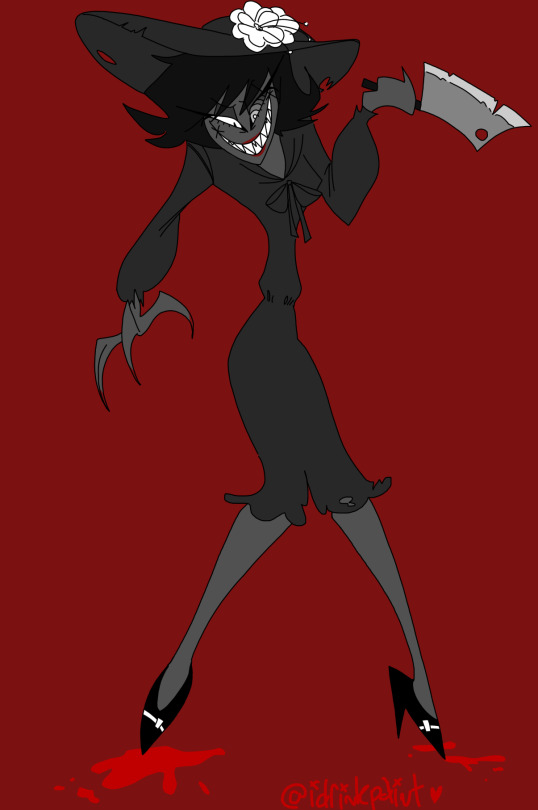
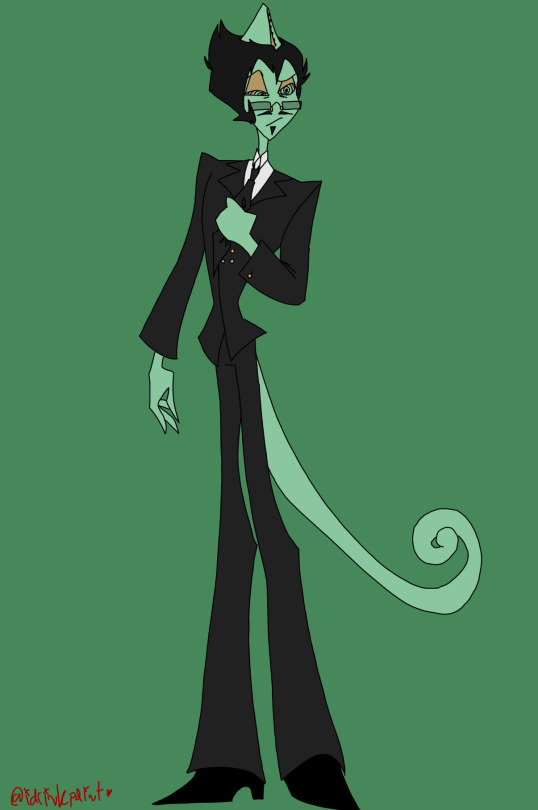


sighs
looks at time
shakes head
yall i came up with these drawings and the lore like, 15 minutes ago
idk smth smth hazbin hotel ocs balh blah blah hell stuff
here’s some info, ill be doing a few comics and doodles about these three!
mrs. dotty “dot” flinn (red background): the wife of mr. franky “frank” flinn (green background). mr flinn cheated on her with her best friend, elizabeth “lizzy” gordon (purple background), despite her being a loyal, loving, and womanly housewife. she checked off ALL of the boxes for women in the 1940s! why would he cheat?? ..simply because lizzy had a curvier body. in her frustration and anger, she took her husband’s butcher knife, brutally mutilating his body, cutting him up and selling his flesh like the pork cuts mr. flinn used to. she was eventually got just as she was about to finish disposing of the evidence, unfortunately sentenced to death on august 12th, 1943.
hell: she takes on a grey scale color theme, relating to the 1940s detective films. she uses blood to paint her lips and nails. her crazed face makes her less approachable, which drives her mad. she loves to interact, she’s very much extroverted, opposite of her ex-best friend, lizzy.
mr. franky “frank” flinn (green background): mrs. flinn’s ex husband! he worked as a butcher to support his wife, supplying plenty of money for the two. they didn’t plan to have children until they were extremely wealthy. mrs. flinn liked to have her best friend, lizzy, over at the house while he was away, often finding the two when he got home, mrs. flinn offering him his nightly glass of whiskey. due to her nice body, mr. flinn found himself more attracted to her than his own wife, leading to the two committing adultery, essentially marking him as a dirty cheater. he was murdered on a cold november night, friday 1942, in his own home.
hell: due to his..cheating and lying habits, he takes on a chameleon form. he struggles to hide how he’s feeling with this new and improved body, his lies obvious.
ms. elizabeth “lizzy” gordon (purple background): an unmarried woman, typically what is considered to be the “popular” girl within their community. she’s known for her sass and welcoming smile, which attracts a lot of men, but she always turns them down when they ask her out. she’d rather gossip and drink with her best friend, dotty. surprisingly, she hates interaction, preferring silence around strangers. she couldn’t help but stare whenever dot’s husband was around, however, feeling an odd *attraction* to him, despite them having nothing in common and no prior knowledge of each other. one unfaithful night, she paired with him in mr. and mrs. flinn’s shared bed, getting away with this horrible secret for about two days before she squealed out of guilt. she felt terrible, deciding to give dot and frank some space to get it figured out, but little did she know that this would be the last time she’d ever see mr. flinn. sooner than later, she lost dotty as well, left alone in the living world.
to mrs. dotty’s misfortune, she and frank were reunited in hell, and much like vox and alastor, they’re constantly at each other’s throats, mr. flinn having an unhealthy obsession with mrs. flinn. their current relationship status is..unclear, but it is doubtful mrs. flinn will find another partner.
stay tuned for more!!
#idrinkpaint#digital art#artwork#art#my art#my ocs#my oc art#hazbin hotel au#hazbin hotel oc#1940s fashion#1940s inspo#vintage inspired#vintage inspo#comic art#oc comic#stay tuned
3 notes
·
View notes
Text
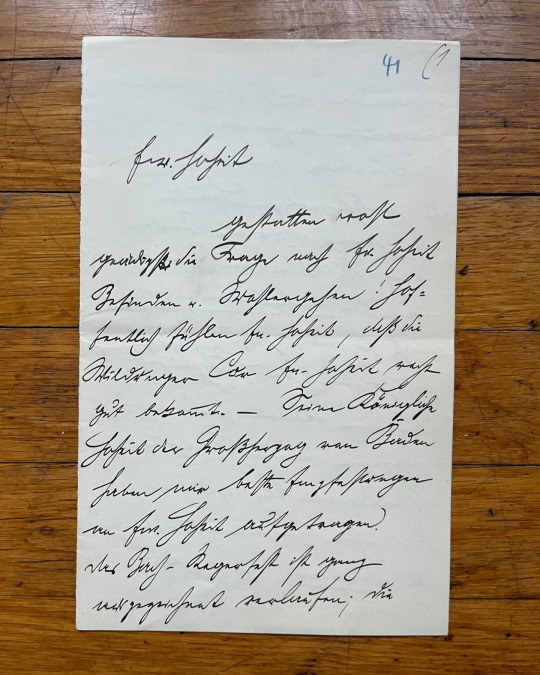


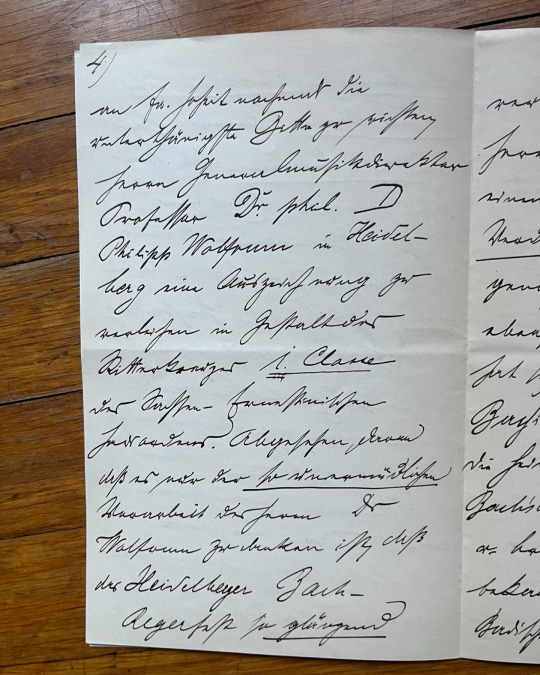


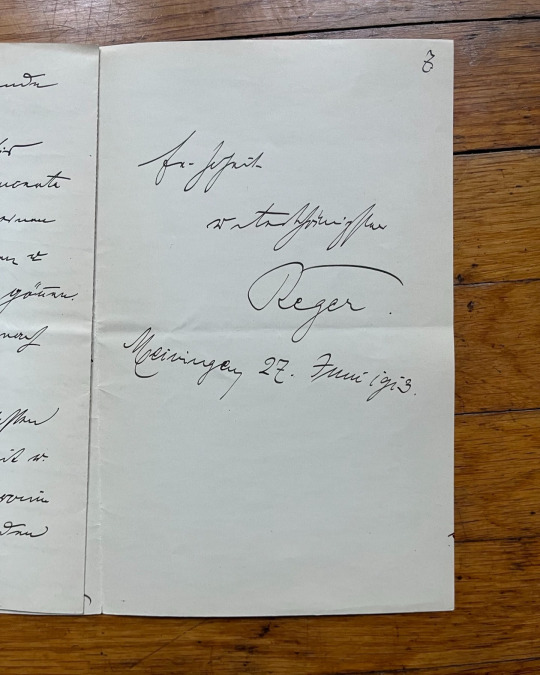

OTD in Music History: Composer, conductor, pianist, organist, and pedagogue Max Reger (1873 - 1916) was born 150 years ago in Bavaria.
As the central figure of the so-called "Back to Bach" movement that gained steam in the late 19th and early 20th Centuries, Reger represents a rather strange case: Many modern day "classical" music fans -- if they are familiar with him at all -- deride him as something of an aesthetic monster; the prototypically tasteless late-Romantic composer of swollen orchestral scores filled with long and pointless fugues on stylistically unsuitable subjects (like his gargantuan "Mozart Variations").
But Reger was actually a remarkably prolific composer, and a good deal of his original music -- which includes beautiful chamber works, charming piano miniatures, profound solo organ music, artful lieder, and daring unaccompanied violin sonatas -- is entirely devoid of the heavy-handed counterpoint which has given him a bad reputation in certain circles.
Arnold Schoenberg (1874 - 1951), for one, was extremely impressed by Reger the composer. Schoenberg summed up his thoughts in a 1922 letter that he sent to his friend and colleague, Alexander von Zemlinsky (1871 - 1942):
"Reger must, in my view, be played often: 1. because he has written a lot, and 2. because he is already dead and yet people are still not clear about him (I consider him to be a genius)."
One story about Reger has achieved a special scatological immortality within certain "classical" music circles:
Reger had a very acrimonious relationship with Rudolf Louis, a German music critic who absolutely despised his work. After Louis published a particularly scathing review of Reger's "Sinfonietta in A Major" (Op. 90), Reger responded with a curt letter which read as follows:
"Ich sitze in dem kleinsten Zimmer in meinem Hause. Ich habe Ihre Kritik vor mir. Im nächsten Augenblick wird sie hinter mir sein!" ("I am sitting in the smallest room of my house. I have your review before me. In a moment, it shall be behind me!").
What more is there to say?
PICTURED: A lengthy six page autograph letter that Reger wrote to a friend in 1913, discussing various musical matters.
Although in his own day he was often viewed with suspicion as one of the "dissonant ultramodernists" (a fact which is almost hard to believe now), as former New York Times Chief Music Critic Harold C. Schonberg (no relation to Arnold) explained:
"Reger himself thought of his music as a continuation of the German tradition. He also claimed that his music was written in the spirit of Bach and Beethoven. 'I can say with good conscience,' he wrote in 1914, 'that of all living composers, I am probably the one who is closest in touch with the great masters of our rich past.' The music of his own day, composed by epigones of Wagner and Strauss, he called 'perverted rubbish'… [and yet at the same time,] Reger himself felt an affinity to [Arnold] Schoenberg. Indeed, he once told the violinist Adolf Busch that of all of the then-modern composers, he felt closest Schoenberg. Likewise, scattered throughout Schoenberg's writings are references to Reger that make it clear that Schoenberg put him on as high a plane as Gustav Mahler and Richard Strauss…”
Perhaps it shouldn’t be surprising that a mutual fan club existed between Schoenberg and Reger -- after all, despite his own fearsome reputation as a "dissonant ultramodernist" (a reputation which, unlike Reger’s, persists to this day) Schoenberg also cut his compositional teeth working well within the lush Post-Romantic idiom (ex: "Verklarte Nachte")… and he too always proudly claimed an artistic lineage that extended straight back to Brahms, Beethoven, and Bach…
#Max Reger#Reger#Composer#classical composer#conductor#Conducting#pianist#piano#classical pianist#organist#classical music#organ#pedagogue#music teacher#teacher#music history#academic teacher#Violin Sonata#Sonata#Sechs Lieder#Zwölf Stücke#Gesang der Verklärten#Der 100. Psalm#Geistliche Gesänge#Die Nonnen#Piano Concerto#Die Weihe der Nacht#Eine romantische Suite#Variations and Fugue on a Theme by Mozart#Requiem
8 notes
·
View notes
Text
I originally posted this idea [no I didn't steal it] on a tiktok comment under another young woman’s video, so if you saw that there, no you didn’t.
The context of the video was a young woman talking about people being annoyed that people are saying Magneto can’t be in the MCU because it would be hard to explain why he’s alive when he was originally born in the 1920s/1930s, so she just assumes that people are just extremely uncreative. And I came up with a way they could make it work within the MCU and commented it. Now I’m going to post that here. [I’m using Earth 616 information as my basis]
Magneto was born as Max Eisenhardt was born in 1930 [no specific day or month given] in Nuremberg, Germany to Jakob and Edie Eisenhardt. Also known Erik Magnus Lehnsherr. In July, 1942, the Eisenhardt family escaped from Warsaw, where they’d moved to in 1940. They were caught and all but Max/Erik were executed for trying to escape. Max became Erik when his wife, Magda, and daughter, Anya, moved to Vinnytsia [or around the time, it doesn’t fully explain when he officially changed his name but it was after WW2 ended]
[I promise this part is relevant] James Buchanan Barnes aka 'Bucky'/Winter Soldier/White Wolf was born March 10, 1917 to George and Winnifred Barnes. In October 1943, James Buchanan Barnes was imprisoned as a Prisoner of War and was beaten until he was too weak to continue and then became a test subject for Arnim Zola to use his super soldier serum and Barnes himself became a version of a Super Solider. In 1945, James Buchanan Barnes fell from a Schnellzug EB912 train rail and fell into the icy cold Danube River. Barnes survived thanks to Zola's super soldier serum but his left arm was lost in the process of his fall. He was found by Soviet soldiers and imprisoned once more but was quickly 'sold' to Zola after his own release from the SSR's custody. From around August 14, of 1945, James Buchanan Barnes became the first subject of the Winter Soldier Program which also would put him into a cryogenics box and kept him frozen until which time HYDRA needed him to kill someone. James Buchanan Barnes lived from 1945 to 2014 using the cryogenics by HYDRA, but he was released from their physical hold in 2014, was removed from life in 2018 and returned to life in 2023.
Magneto is well known for going after Nazis. And That is what Hydra is, although they did get a bit convoluted with supposed-Good Guys™ S.H.I.E.L.D and had to do Good Things™ in order to keep their Evil Doings™ under wraps. It's said that after Magneto's daughter died in a house fire and his wife ran away from him [after he killed everyone who prevented him from saving his daughter] Magneto infiltrated Hydra enough to steal Nazi Gold and use it to fund himself hunting down Nazi war criminals.
Hydra kept James Barnes on ice to control him. It would be easy to say that Magneto was captured and his ice box malfunctioned and that's why he's in the MCU now. Magneto being one of the biggest threats to Nazis and Hydra deciding to take him out but failing to do so [Death of his daughter anyone?] then capturing him, putting him on ice to try and figure out how to control him/his powers, then realizing they couldn't because he's stubborn and powerful so they leave him in the ice box for over decades (from ~1950 to 2026 = 76 yrs) until it finally malfunctions [as all tech does eventually].
And because we know everyone wants to see a full 'House of M' family then they can have it so his DNA helped in making Wanda and Pietro's powers come to fruition [maybe they're his descendants because his wife left him while pregnant (in some comics), so her child has a child who had a child who had a child etc etc etc who had a child who had the twins and their powers were latent mutant abilities [hidden under years of genetics never triggering a recessive Mutant gene via the generations] brought forth by the Scepter. [The amount of generational difference, like whether Magneto would be their father or grandfather is up for debate depending on how old their parents were when they had the twins, and if they were young enough (think mid-teens) then Magneto could even maybe be their great-grandfather]
And then they could say that Magnetos baby making DNA was extracted as a thorough HYDRA test to see if they could create a human with his abilities that they could control {or they used his DNA, extracted his X-Gene and injected it into an IVF embryo and she was born to a woman who didn't even know what happened to her unborn child} and thus Lorna Dane was born, but she was kept from HYDRA when her mother broke out of Hydra's control while pregnant [maybe during Hydra's fall in 2014]. This would also work to manage Lorna's origin story of the Plane vs her parents, given that her parents didn't know she had powers in the first place and her parents were arguing about infidelity during the plane ride so, maybe Lorna has some markers [like lets say her eye color doesn't match her parents, men have asked for paternity tests for less] that make her father question if she's his. When in reality, technically she is but she'd mutantly Magneto's child.
And it would also work if Magneto disappeared in the Snap and came back in the Blip and his icebox was malfunctioning due to no care during the Snap because there was no one inside it.
Then Lorna Dane would be about twelve in-universe in this version of the story and would be being raised by her aunt with magnetism powers and green hair. It's possible to make it work. [They could always chose a further back birth time for her and bring Emma Dumont in to play Lorna again]
And we'd keep the continuity of Wanda and Pietro having some relation to Magneto but in this case, they were never told they were related to him [because Traumatized Magda never told her child who their parent was and thus it was just not common family knowledge] and we'd maybe even get to see a scene where Magneto tells Wanda {because I don't think she's dead} and Pietro {because he needs to be resurrected} that he's disappointed in them for joining Hydra.
And that's how Magneto ends up in the MCU and still remains a Holocaust survivor because it's integral to his character to be such.
#Magneto#Erik Lehnsherr#max eisenhardt#MCU Xmen#MCU Mutants#Lorna Dane#Wanda Maximoff#Pietro Maximoff#This is just a random thought theory not meant to offend anyone or piss anyone off#If I got something wrong here be nice in explaining what it was
36 notes
·
View notes
Text
NEW INVINCIBLE OC

(Picrew as a placeholder until I can get a good photo of him)
Introducing Kyle Washington a.k.a Frontline!
Kyle was born on the 17th of March 1919, the youngest child of a small farming family in Fulton County, Kentucky. The child of two immigrants, Kyle has been said to be the perfect mix of his parents, with the confidence and wit of his Irish father and the kindness and patience of his German mother. Despite growing up in a house of little social standing, Kyle always maintained big dreams and went the extra mile in his studies. This eventually paid off when a visiting professor saw the incredible aptitude he had for mathematics, and this resulted in a miraculous scholarship to the illustrious University of Kentucky in Lexington.
While never expecting the opportunity given to him, Kyle did all he could to advance in his classes, making the Dean’s List several times across his engineering degree before graduating at the top of his class in July of 1941. It was also here that he made several left-wing friends, who did much to influence his moral worldview and encourage his desire to benefit others with his qualifications, which became his primary goal upon graduation.
That was until the Second World War came around.
Being of age and sufficient health, Kyle was soon drafted into officer training, commissioning as a Second Lieutenant in April 1942. While awaiting his orders to ship to Fascist Italy, Kyle was approached by a ‘Colonel Ross Lake’, later discovered to be none other than The Immortal, who recommended he take part in a clandestine experiment: the experiment caused a radical physical transformation in Washington, turning an able-bodied farm boy into a goliath of a man endowed with superpowers. He saw his first combat in January of 1943 with the landings at Anzio Beach, not as part of a regular military unit, but as part of the world’s first superhero team: The Defenders of the Free World. Alongside legends like The Immortal and War Woman as well as other newcomers like Soprano and the original Red Rush, they fought from Italy’s blood-soaked beaches to Germany’s ruined cities, fighting soldiers and supervillains alike. Post-war, these five would also form the first iteration of the Guardians of the Globe in May 1947.
From here, Kyle, now in his hero alias of Frontline, went on to lead an illustrious 48 year long career as a professional superhero, doing everything from fighting several alien invasions to leading the first ever version of the juvenile Teen Team, which included future Guardians Green Ghost, the second Red Rush and Black Samson. Eventually, Frontline mysteriously vanished while on a mission in late 1994. He was presumed dead for almost 28 years, until a mission by Capes Inc. unearthed him imprisoned in a secret compound in the Himalayas. After a short recovery period, Frontline returned to active duty, more eager than ever to pursue justice worldwide.
Powers/Abilities:
Super Strength- Frontline’s strength is by far his most well-known attribute, simply because he is unequalled by any other human, to the point he is frequently known as ‘The Strongest Man on Earth’. In fact, his level of strength puts him above most fully matured Viltrumites, making him one of the most viable contenders against a future Viltrumite invasion.
Superhuman Durability- Frontline’s cells were made astronomically denser by the experiment that gave him his powers. He has survived gunshots, attacks from blunt and sharp weapons, electricity, both extreme heat and extreme cold, explosions, radiation, acids, and even extreme gravitational force. This ability is so strong that it borders on nigh-invulnerability.
Superhuman Stamina- Frontline’s cells are also able to respirate much faster with much less oxygen than most humans, allowing him to perform for hours on end without any visible signs of tiring.
Slowed Aging/Immortality- Frontline ages at a vastly slower rate than other humans. Despite being 103 years old at the time of writing, he maintains the appearance of a man in his late forties to early fifties.
Danger Sense- This ability is by far Frontline’s most unique superpower: his body emits a low-level extrasensory field with an estimated radius of around 25-30 meters wide, functioning as a sort of ‘sixth sense’, that allows him to remain aware of any other living beings nearby. This field is subject to the laws of physics, unable to penetrate solid surfaces. The main purpose of this field is to alert him to any imminent dangers that he would otherwise remain unaware of, making it nigh impossible to ambush him in any situation.
Master Combatant- Seasoned by decades of action and hundreds of hours of training, Frontline is one of the world’s most accomplished hand-to-hand fighters, employing a mix of American Boxing, Krav Maga, Pro Wrestling, Judo, Taekwondo, Karate, Muay Thai, Capoeira and Brazilian Jiu-Jitsu.
Leadership/Tactician- Frontline has military training and as a result knows how to effectively co-ordinate a group of heroes in the heat of battle.
Multilingual- Frontline is fluent in English, German, French, Spanish, Italian, Russian and Portuguese. He is also proficient in Japanese, Arabic, Tagalog, Mandarin, Polish, Hindu, Turkish and Greek.
Equipment:
Enchanted Amazonian Shield- A gift from fellow hero War Woman, the shield that serves as Frontline’s main weapon is forged from the same material as her mace, making it nigh indestructible. It is also magically bound to him and will return to his hand with a physical cue to do so (most commonly him holding out his hand).
Super Suit: The latest of Frontline’s superhero attire is an update of one of the first designs created by renowned superhero tailor Art Rosenbaum in November 1981, designed to keep up with much of the damage that previous costumes could not. A complicated mix of spandex, Kevlar and even a non-Newtonian fluid that remains classified, the suit has withstood attacks from firearms to superhuman opponents, and even withstood the now-legendary brawl between Frontline and the mythical Ancient Greek hero Herakles. Most early iterations of his uniform had a detachable helmet or built-in cowl for him to conceal his identity, but the updated version he wears in the modern day does not, with him reasoning ‘I’m dead anyway, who’s gonna know me?’
Amazonian Dagger: Another gift from the Amazons, this eagle-headed dagger is also forged from the same material as Washington’s shield, also making it nigh indestructible. It also is strong enough to cut through Frontline’s unnaturally strong facial hair, and therefore sees more use as an implement for shaving than as a weapon.
Personality:
Kyle is a very old man, and it shows in how he interacts with others, as he acts much like you would expect your favourite grandparent to. Underneath this relaxed and affable exterior, however, lies the forceful and unwavering personality of someone who has been fighting for the past sixty or so years of his life, something that has been there since his youth. He can also be quite protective of those in his care, acting as a father figure to many heroes over his career.
Description:
Standing at 6’3 (1.9m) and weighing in at a staggering 260lbs (118kg), Frontline’s stature matches his larger than life public persona. He has golden blonde hair that is marked by wisps of grey in his old age, and his eyes are a cool earthy brown. His hair used to be slicked back with gel, but since his return has remained in a fairly long side-parted curtain (think Jensen Ackles as Soldier Boy). He also grows a full beard now that he no longer a wears a helmet, which still remain fairly thin, not going past the bottom of his chin.
Inspirations:
Captain America/Steve Rogers

As you’ve probably already guessed, the main inspiration behind Frontline is none other than Captain America himself. Much of what makes Kyle who he is, from growing up poor to his debut in WW2, is taken directly from Steve Rogers’ character.
Superman/Clark Kent
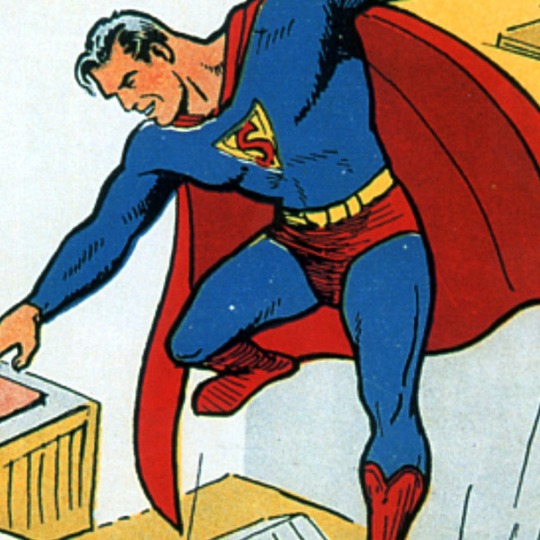
Another big inspiration behind Kyle is DC’s Man of Tomorrow. From his background as a rural farm boy to his intense desire to use his powers for the benefit of others.
My aims with this character is to explore a facet of superhero comics that has always fascinated me: the history of the larger superhero community, as well as looking at how the rise of the superhero has affected the world of Invincible on a much grander scale.
#invincible#invincible show#invincible amazon#invincible oc#🦅🛡#kyle washington#finally made one for the old man#gonna make a master post for all my OCs soon so you guys can look at then more easily
8 notes
·
View notes
Text
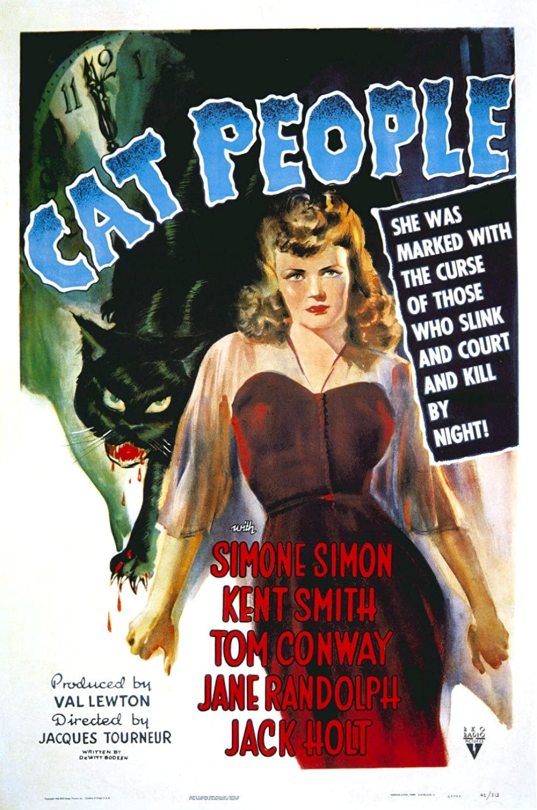

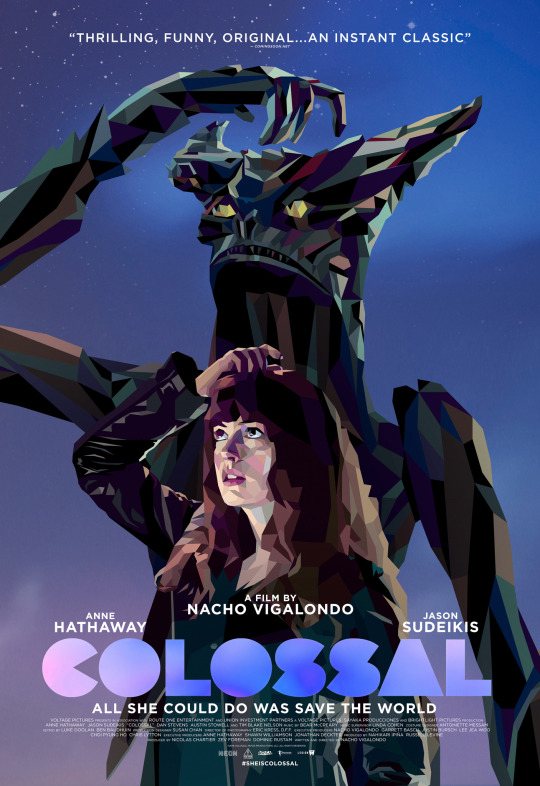

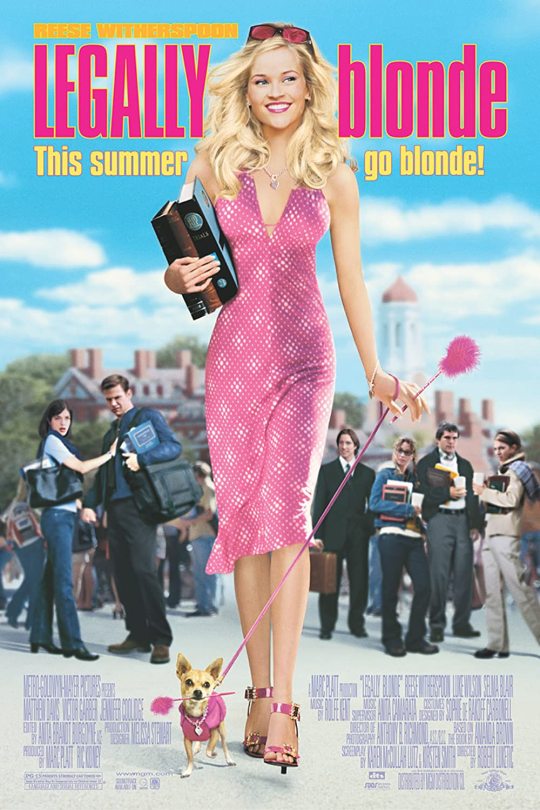
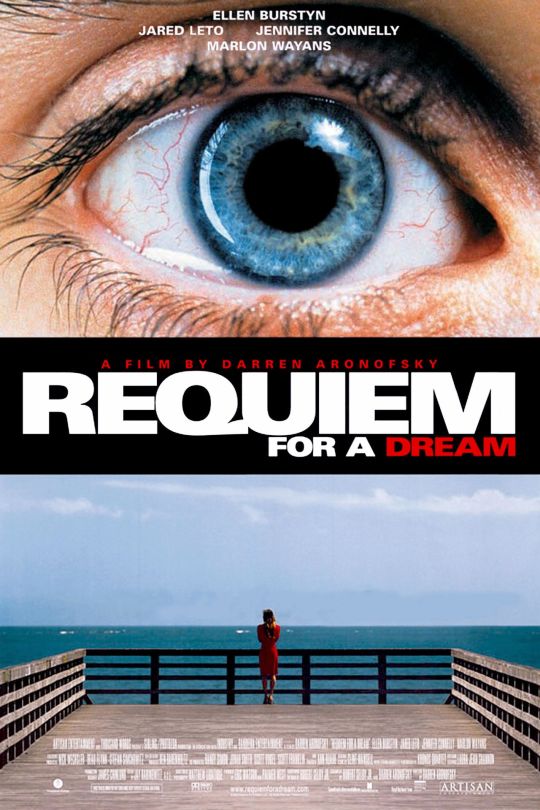

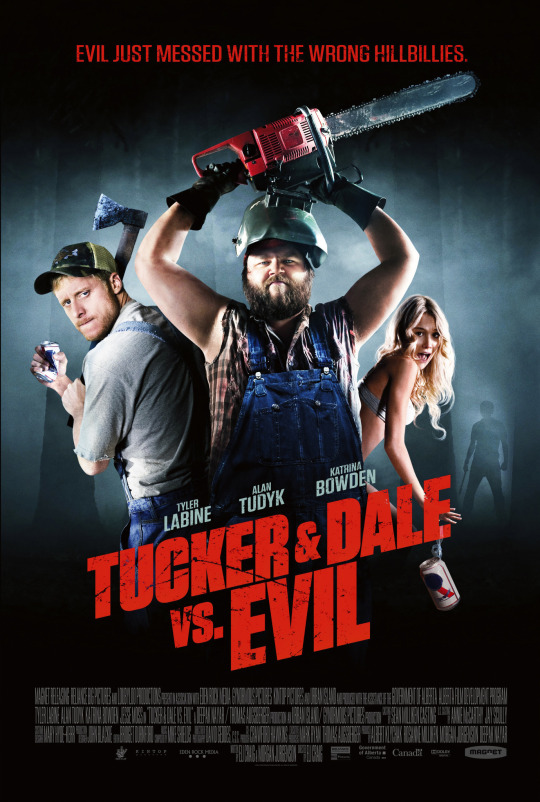
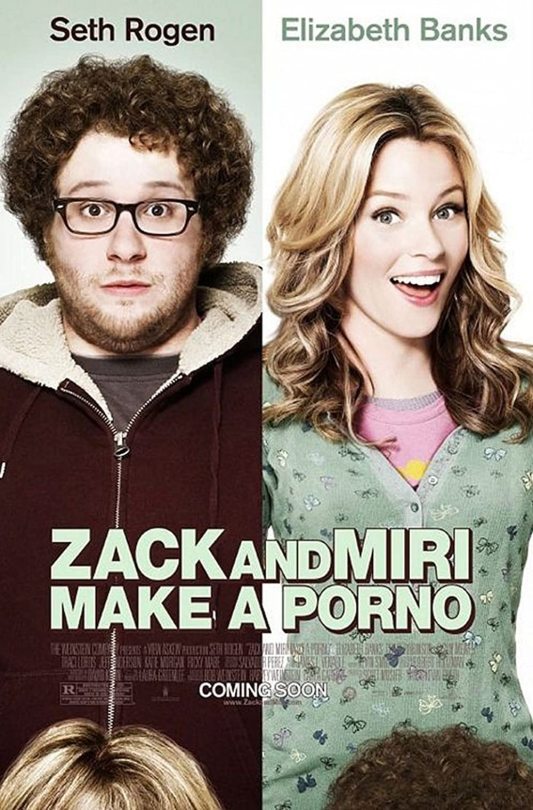
I was (unofficially) tagged by @bbgirlsteve to list nine of my favorite movies.
Gotta tell you, narrowing this list down was hard. I was a Film major back in the day, so I have a ton of movies that I love dearly.
Tumblr arranged them in alphabetical order, so below is the actual order, along with a little blurb about each!
(1) Requiem for a Dream (2000)
This is my all-time favorite movie, and one of the few I view as being perfect. It's about four people going down the downward spiral of addiction and experiencing all of the consequences that come with it.
It was the first movie I watched on my own when I was trying to be a Serious Film Student, and I was blown away by it. In particular, the editing style is remarkable. It uses over 2000 cuts, whereas your average film of the same length uses about 600 - 700. It's done in such a way to mimic a drug user's experience, going from rapid, frantic movements to slow calms.
I must stress though, if you want to watch this movie, PLEASE exercise caution. The whole reason I found it was because it was on several Most Disturbing Films Ever lists, and it earns its place there. It's like a very long, drawn out sucker punch - painful, dark, and potentially will leave you laid out for a day.
(2) Legally Blonde (2001)
On the complete opposite end of the spectrum, Legally Blonde is my second favorite. I'm sure most of you know it, but in case you don't: A "dumb blonde" goes to Harvard Law School to win back the boyfriend who dumped her.
I love it because it works hard to subvert the dumb blonde stereotype - Elle is smart, hard-working, and above all has a good heart. This movie just has an overall positive message, plus it has a ton of female positivity, which the world needs way more of.
It's my go-to sick day movie because it never fails to make me feel better.
(3) Coraline (2009)
Ah, Coraline. A cautionary tale about a little girl who discovers a gateway to a perfect parallel world in her new house (except it's not so perfect).
This one I love because it manages to perfectly marry the magic and pains of childhood with extreme darkness. Coraline is just a kid who longs for adventure and a family that pays attention to her, which hit home for me in a lot of ways. And then they come in with "oh by the way you have to have buttons sewn into your eyes." God, that moment still makes me shudder.
Also, fun fact: Coraline held the world record for the longest stop motion animation film (100 minutes) for seven years until it was overthrown by Kubo and the Two Strings (101 minutes).
(4) Colossal (2016)
Colossal is probably one a lot of you have overlooked. It's a got a very strange premise - a drunk, down on her luck woman is somehow linked to and controlling a kaiju that randomly appeared in South Korea? What?
But this movie is so, SO good. After not really paying much attention to movies for a few years, Colossal was the one that made me take notice again. It's a masterclass in acting from both Anne Hathaway and Jason Sudeikis. Its premise, while strange, lends it a unique charm I have yet to find in another movie, even other kaiju or body swap type stories. And its another positive message movie - no matter how hard life or other people knock you down, you can get back up and keep fighting.
I can't recommend it strongly enough.
(5) Cat People (1942)
This movie's premise is also pretty bonkers: A woman won't have sex with her husband because she thinks that she will turn into a giant cat and eat him if she does.
However, do you like modern horror movies? If you do, you have Cat People to thank for them.
Obviously, horror movies had come out before Cat People. It was made by RKO as a response to Universal's success with Dracula and Frankenstein, after all. However, Cat People set up a lot of things that would inspire later horror movies. In particular, its use of the idea that "What you don't see is scarier than what you do" and emphasis on subtlety rather than in your face scares is something you see coming from here. It's also credited as the source of the very first jump scare.
(6) Coco (2017)
I love movies about music and/or that have good soundtracks. Coco falls into both categories, since it's about a little boy who wants to be a musician and ends up seeking out his musical ancestor in the Land of the Dead after his family rejects his musical aspirations.
It is visually gorgeous - I legitimately think this is the prettiest movie Pixar has ever made, which is saying a lot. (The moment where Manny crosses the marigold bridge into the Land of the Dead comes to mind) I also love the way that the Mexican culture and music is seamlessly woven into the story. It truly transports me to a new world.
(7) The Ring (2002)
Everyone knows the story even if they haven't seen this movie: It's about a video tape that kills you seven days after you watch it.
And this is the single scariest movie I've ever seen.
I first watched it when I was about 13. I watched it on VHS alone in the basement of my childhood house late at night (which definitely upped the scare factor).
I actually thought the movie was over after they discover Samara's body in the well and stopped the movie. But then I decided I wanted to watch the credits because I wanted to see who was in the cast.
And boy did I get a surprise.
That single moment redefined horror for me. To this day, there hasn't been another movie that has scared me that badly.
(8) Tucker & Dale vs Evil (2010)
Conversely, there hasn't been a horror comedy that hit all the right notes quite like Tucker and Dale.
It's a spoof on your typical summer slasher movies like Friday the 13th or Wrong Turn, but done right. It takes every single slasher horror trope you can think of and turns it on its head.
This movie made me laugh harder than almost any other movie. It's also made from a place of love, honoring the tropes and movies that came before it, and working with them to make an amazing movie.
(9) Zack and Miri Make a Porno (2008)
Yes, this is a romantic comedy about two friends making a porno together. And it's good.
It's hard to make me like romantic comedies. They have to have something that really sets them apart. Zack and Miri does this by leaning hard (hehe) into its premise. It's not ashamed, it gleefully shows off its cast in every sense of the word, and it still manages to create one of the most intimate sex scenes I've ever seen. (Yes, in a film about porn) Plus it's funny as hell.
Just do yourselves a favor and don't watch it with your mom like I did.
Some honorable mentions:
The Omen (1976)
Happy Death Day
Ratatouille
Us
Pan's Labyrinth
Candyman
Stranger Than Fiction
Wolf Children
Cabin in the Woods
Little Miss Sunshine
A Quiet Place
~
Tagging (no pressure or obligation <3): @justmyownreality @iantoya @therantingfangirl @obscurism @starnightcat @moonlight-alphafemale @mal-the-konohoe
And if you weren't tagged but want to participate, please feel free. I love talking movies!
8 notes
·
View notes
Text
A Reporter at Large: The Great Foreigner
— By Niccolo Tucci | November 14, 1947 | November 22, 1947 Issue

Albert Einstein outside his home in Princeton, New Jersey, 1951. Photograph by Ernst Haas/Getty
There is such a thing as being a foreigner, but not in the sense implied by passports. Foreigners exist, to be sure, but they may be found only in places where it would be impossible to discover a single policeman or a single immigration official—in the field of the intellect. A man who achieves anything great in any province of the mind is, inevitably, a foreigner, and cannot admit others to his province. If you are one of his own people, you will, of course, find him, because you yourself are there, but if you are not, your knowledge of him will be mostly confined to the petty intelligence of the gossip columns. Now, we all know from experience what it means, in this sense, to be refused entry, even as a temporary visitor, into this or that foreigner’s domain. We meet a great man and cannot talk to him, because, alas, we happen not to be able to get interested in the thing in which he excels. Silly though it seems, this is humiliating, for it makes us aware of our limitations. Yet that feeling is soon forgotten. There are people today, however, whose foreignness can’t be forgotten, and these are the physicists, who have done things to us that keep us wondering, to say the least. They have lessened—in fact, almost destroyed—our hopes of a quiet and happy future. It is true that they have also increased our hopes of surviving discomfort and disease, but, oh, how far away that seems, and how near seems the possibility of extermination! That is why, when my mother-in-law, who flew over from Europe a couple of weeks ago, said that she wanted me to accompany her on a visit to the home of her friend Albert Einstein, in Princeton, I was very reluctant to go.
I had seen Einstein several times in the past eight or nine years, and on the last occasion—in 1942, I believe—I had been bold enough to invite him to come out of his inaccessible territory and into that of all the unscientific people, like myself. Would he, I asked, explain, in words rather than in mathematical symbols, what he and his colleagues actually meant by the fourth dimension? And he did, so simply and so clearly that I left his house with an uncontrollable feeling of pride. Here, I, the living negation of anything even slightly numerical, had been able to understand what Einstein had said—had really said, for he had said it not only in his conversation with me but years before in his theories. Obviously, he had explained to me merely what a child would be able to grasp, but it impressed me as much more because my schoolteachers and my father, all of them less great than Einstein, had never forgone a chance to make me feel a perfect fool (and to tell me, lest I should have missed drawing the inference), even when they spoke to me about fractions or equations of the first degree. I consequently realized that Einstein belonged to the extremely rare type of foreigner who can come out of his seclusion and meet aliens on alien ground. Yet, much as I cherished the recollection of that pleasant experience, I did not think it altogether advisable to try my luck again. “This time,” I said to my mother-in-law, who is called Bice in the family, “he may easily make me feel like a fool. Besides, in 1942 Einstein’s achievements did not keep me awake at night, as they do now. If I saw him now, I would not be moved by the slightest scientific curiosity about his work. I would much rather ask him what he thinks of the responsibility of modern scientists, and so forth. It might be quite unfair to him and unpleasant for me.”
Well, mothers-in-law must have secret ways of persuasion, because a few days later I gave in, not only on seeing Einstein but also on taking along Bimba, my six-year-old daughter. “All right,” I said resignedly, “but you, Bimba, will be sorry for this. You don’t know who Einstein is. He has all the numbers; they belong to him. He will ask you how old you are.” And I must say here that Bimba, even more than myself, is the mathematical scandal of our family. She tries to count her six years on her fingers, but she forgets how high she has counted and must try again. Upon a guarantee from me that Einstein would not interview her on that delicate subject, we made peace and departed. On our way out of the apartment, we met my eight-year-old son, Vieri, who was playing ball on the sidewalk.
“Vieri,” I said, “want to come and see Einstein?”
“Einstein the great mathematician?” he asked.
“Yes,” I said.
“Naw,” he said. “I have enough arithmetic in school.”
On the train that morning, my mother-in-law and I talked a great deal about Maja, Einstein’s younger sister, one of two links Bice has with higher mathematics. But I must say that she is a weak link, because Maja is the opposite of all abstraction. She looks exactly like her brother (one would almost say that she, too, needs a haircut), but she is a Tuscan peasant, like the people who work in the fields near her small estate of Colonnata, just outside Florence. Even her frame of mind is, in spite of her cosmopolitan culture, Tuscan. Whatever in conversation does not make sense to her in plain, human terms she will quickly dismiss with a witty remark. But before becoming a Tuscan peasant, Maja was a brilliant young German student of philosophy in Paris. She interrupted her studies to take a job as governess in charge of young Bice, whose mother had just died, leaving her the only female of the family, surrounded by a number of older brothers and her father. All this happened forty years ago. Soon after her arrival in the family, Maja became Bice’s second mother and dearest friend. Even after Maja resumed her studies and got married, they remained very close, and did not lose touch with each other until shortly before the outbreak of the recent war, when Maja left Italy to join her brother in Princeton. And today Bice, accompanied by a somewhat impatient son-in-law and by a pestiferous young angel of a granddaughter, was rushing to Princeton for the great reunion.
On the way, we also talked pleasantly about America (like all Europeans who come here for the first time, Bice was eager to know about everything in the first week), we discussed the fate of the world and the wisdom of those who run it, we quarrelled over theology (Bice is fond of theologies, with a marked preference for her own, the Roman Catholic), and finally I noticed that she wasn’t listening to me any more. She frowned, she shook her head, then she smiled and nodded, staring in front of her, but not at me and not at Bimba. I knew that she was making an inventory of her sentimental luggage. All the news of the troubled years, from the death of her eldest son in the war to the latest item of family gossip, from the bombings of towns to the latest method of making a pound of sugar last a year, were being called to mind, so that everything would surely be ready for Maja. I made a sign to Bimba not to interrupt her grandmother, and Bimba sat there and stared, somewhat frightened by this woman who was looking so intently at her own life.
When we arrived in Princeton, it was quite misty, and there was a threat of rain in the Indian summer air. At the station, we took a cab and soon learned that the driver, a young student, was the son of a friend of ours in Florence. He was trying to make enough money driving a cab to finance a trip to South America. Our conversation with him was so interesting that only the sight of open country around us made us realize that we had driven all the way out of town. We drove back and stopped in front of a house on Mercer Street. I had forgotten the exact address, but this house looked like the right one. In her eagerness, Bice ran ahead of me toward the door, but the reunion could not take place, because, as we discovered when we rang the bell, it was the wrong house. Luckily for us, the cab was still there, so we drove along a little, and finally, after ringing the bells of two other families that refused, not without sorrow, to be the Einsteins, we decided upon one more house, which happened to be the right one. Miss Dukas, Einstein’s secretary, greeted us at the door; then came Margot, his delicate and silent stepdaughter, who looks so much like a Flemish painting; and Chico, the dog, who tried to snatch Bimba’s red ribbons from her pigtails.
“Bimba,” I said, “don’t get the dog excited. Remember how he ate your doll five years ago. Now, if you are not very quiet today, I am going to ask you in front of Einstein how much makes three and two—understand?”
She nodded, and whispered, “Four?”
We were asked to wait for a moment in the small anteroom that leads to the dining room. Maja was upstairs; she was being helped out of bed and into the chair in which she spends most of her day. She is recovering from a long illness, which has delayed her return to Italy, so it was only natural that this reunion should be delayed until she was ready and comfortable. And yet this addition of even a few minutes to years of separation created an effect of absurdity. One always imagines that the crossing of the last span of a trip bridging years will be something impulsive: when all the real impediments, such as continents, oceans, and passports, have been overcome, friends should run into each other’s arms as fast as they can. Still, it is never quite that way. We become so used to living at a distance that we slowly begin to live with it, too; we lean on it, we share it, in equal parts, with our faraway friends, and when it’s gone and we are again there, corporeally present, we feel lost, as if a faithful servant had abandoned us.
To fill in those extra minutes, we began to look at the furniture in the anteroom and dining room, and I noticed again what I had noticed five years ago in those same rooms: everything suggested the house of a faculty member of a German university. I could not trace this impression to any particular object. The large dining-room table in the center, with the white tablecloth on it, was not particularly German, nor was the furniture in the anteroom, but there was the same quiet atmosphere of culture that had impressed me so deeply in the houses of university professors, in Freiburg, Leipzig, and Berlin, to which my parents had taken me when I was a boy and spent my summers travelling over Europe. It is something that remains suspended in the air almost as stubbornly as the smell of tobacco; one might say that the furniture had been seasoned with serious conversation. Curiously, it is an atmosphere that can never be found in the apartment of a diplomat, even if he is the son of a professor and has inherited his father’s furniture.
We were finally called upstairs by Margot, who then disappeared into her study. Bice’s impatience was such that, not finding Maja in the first room we entered, she said disappointedly, “Not here,” and ran toward a closed door to open it, like a child playing hide-and-go-seek. This search lasted only a matter of seconds, because the house isn’t large enough for a long search. But by the time we reached Maja, Bice seemed almost to have lost hope that she would ever get there. Maja was standing near her chair waiting, quiet, dignified, almost ironical, under a cloud of white hair. She never shows any emotion, never speaks louder than a whisper, and never more than a few appropriate words—just like the Tuscan peasants, with the difference that when they whisper, they might as well be addressing a crowd across a five-acre field.
The “How well you look!” and “How unchanged you are!” were soon over, and then the Great Foreigner arrived, pipe in hand and smiling gently. He complimented Bice on looking just the same as ever, and received the same compliment with grace, then inquired about Michele, Bice’s eldest brother and her second link with higher mathematics. Uncle Michele is a gentle little man who sits in Bern, Switzerland, and looks out into the world, leaning on a white beard that descends from almost under his blue eyes to the end of his necktie. Every night for twenty years, in the company of a friend, he has looked into “The Divine Comedy,” taking time off to look into his soul with a fierce, puritanical spirit tempered by a great deal of natural goodness; he has also looked into the field of economics, trying to find mathematical formulae to solve the crisis of the world; and for a long time, in the company of Einstein, he looked into the mysteries of higher mathematics. We had just finished hearing all about Uncle Michele’s health and his many grandchildren when Bice seemed suddenly to recall an extremely urgent matter—as if, indeed, it were the very reason she had flown all the way over here from Europe. “Herr Professor,” she asked, in German (the whole conversation, in fact, was in German), “this I really meant to ask you for a long time—why hasn’t Michele made some important discovery in mathematics?”
“Aber, Frau Bice,” said Einstein, laughing, “this is a very good sign. Michele is a humanist, a universal spirit, too interested in too many things to become a monomaniac. Only a monomaniac gets what we commonly refer to as results.” And he giggled happily to himself.
Then we spoke about dreams. Bice told us two symbolic dreams she had had years ago; I told the dream that the grandfather of a friend of mine had had the day before he died; Einstein told an absurd dream of his. He seemed the only one to find the conversation interesting, which it was not. Bice was now sleepy (the emotion had been too great for her); Maja sat silent and ate her lunch, which a nurse had brought in on a tray; and I nodded to Einstein’s words, searching impatiently for a way out of dreams to the subject of the responsibility of modern scientists. But the atmosphere somehow weighed on me. The mist was getting thicker, and it had begun to rain, with that quick, fingertip drumming on the leaves, on the roof, on some pail outside, that makes you go to sleep. It was dark in the room now. The only points of light were the white of the bed, the white of the nurse’s uniform, and the white of Maja’s hair and of Einstein’s head against the window—and his laughing eyes, his voice, and the joy that sprang from him. “Damn the responsibility of modern scientists on a damp day like this,” I thought. It made me both envious and angry to see this man in front of me who laughed so heartily at the most trivial things, who listened with such concentration to our nonsense, who was so full of life while I could see no reason even for breathing in that damp, misty air. “Why is he so young,” I asked myself, “and what makes him laugh so? Is he making fun of us, or what is this?” Then I began to understand. He had just come from the other room; he was stretching his mind; he was “abroad.” All these words were only formally addressed to us; actually they were references to some demonstration he must have received, in the heart of his own secret country, that something was exactly as he had suspected it would be. Yes, it could be nothing but this: he had done fruitful work that morning. I saw it now because I recognized myself in him—not as a scientist, alas, but as a child of seven, at which age it was my hobby to make locomotives with tin cans and old shaving brushes (the smokestack with the smoke). The situation was the same. When the joy of toymaking became too great, I had to interrupt my work and run to the living room, where the grownups were boring themselves to death. And I laughed at their words without bothering to inquire what they meant; I found them interesting, new, exciting; I was praised for being such good company while in actuality I was still playing with my locomotive—I was deciding in my mind what colors I would paint it, what I would use for wheels and lanterns—and it was good to know that no one shared my secret. “You and your toys,” I thought, looking at Einstein with the envy that an ailing old man has for a young athlete.

Lunch was announced, and we went downstairs, leaving Maja alone. The smell of food consoled me for my humiliation. I began to eat. Einstein asked Bice for her impression of America, and she expressed her disappointment at the bad manners of children in this country. This led to a family argument, in which Einstein was asked to act as arbiter. Bice claimed that American children (she meant mine, of course) have no respect for the authority of their parents, or for that of such people as park attendants. To prove her point, she said that, on the day before, Vieri and his friend Herbert had laughed in the face of a park attendant when he told them not to play ball. Yes, they had obeyed him in the end, but not without making strange noises in his honor. (She didn’t know the name for this Bronx ceremony.) I conceded that this was frightful, but I reminded her that a park attendant in Europe was a sort of Commander-in-Chief of Leaves and Flowers and First Admiral of Public Fountains and of the paper boats in them. Even a smile addressed to him without proper authorization was considered daring. “When I was a boy in Italy, we never questioned anyone’s authority,” I said, “and thus we passed, with the most perfect manners, from the hands of our nurses to those of our tyrants.”
As moderator, Einstein asked me how I had managed to lose authority over my children.
“I didn’t have to work much,” I replied. “It was rather simple. I just told them, ‘Look at the kind of world in which we live. See what we, the grownups, are able to invent, from passports to radioactive clouds.’ “
Bice contended that nothing is gained by embittering the lives of children with remarks of that nature, but Einstein was in full agreement with me when I answered that less than nothing is gained—in other words, that much is lost—by lulling them into the illusion that all is as it should be in the world. “You, as a scientist,” I said to Einstein, “know that the world is round and not divided naturally by cow fences into holy, restricted fatherlands. When you were young, there was still a semblance of good in governments and institutions, but today—see where we are today.”
He became very serious, as if he were seeing where we are today, but suddenly a smile lit up in his eyes, and it quickly spread all over his face and beyond it. He laughed happily, then said, “Let me tell you what happened to me years ago, before the other war, when there were no passports. The only two countries that required them were Russia and Rumania. Now, I was in Hungary and had to go to Rumania. I didn’t know where and how to apply for a passport, but I was told that it wasn’t necessary. There was a man who had a passport of his own, and he was kind enough to let anybody use it to cross the border. I accepted the offer, but when they asked me at the frontier what my name was, I said, ‘Wait a moment,’ took out the passport from my pocket, and had a great deal of trouble trying to find out who I was. Now, to go back to your point, I agree with you that those who exercise any kind of authority, be it the authority of a father or that of a government, have a definite obligation to show that they deserve respect, but the trouble with grownups in our day is that they have lost the habit of disobedience, and they should quickly learn it again, especially when it comes to the infringement of their individual rights.” He laughed again, this time like a bad boy, then, shaking his head, said, “These grownups. Isn’t it terrible how readily they will obey?”
“Take the loyalty test for federal employees, against which so few have protested,” I said.
“That is a case in point,” he answered. “People are asked to be loyal to their jobs. But who wouldn’t be loyal to his job? Too many people, indeed. Also in Italy and in Germany they used to test people’s loyalty to their jobs, and they found a far greater loyalty to jobs than to democracy. But now tell me another thing. What do you give to your children in the way of good news about the world?”
“Plenty,” I said. “For example, I tell them about Socrates, who was killed by the greatest democracy on earth for standing at the corner drugstore and asking questions that made the politicians feel uncomfortable.”
“That’s not a cheerful story, either,” he said, “but if they were able to absorb some of the spirit of the Greeks, that would serve them a great deal later on in life. The more I read the Greeks, the more I realize that nothing like them has ever appeared in the world since.”
“You read the Greeks?” I said.
“But of course,” he replied, slightly surprised at my amazement. And so I heard, partly from him and partly from Miss Dukas, that he reads the Greeks to Maja every night for an hour or so, even if he has had a very tiring day. Empedocles, Sophocles, Aeschylus, and Thucydides receive the tribute of the most advanced and abstract modern science every night, in the calm voice of this affectionate brother who keeps his sister company.
“You know,” I said, “that is great news. Young Americans, who have an idea of the pure scientist worthy of the comics, should be told that Einstein reads the Greeks. All those who relish the idiotic and dangerous myth of the scientist as a kind of Superman, free from all bonds of responsibility, should know this and draw their conclusions from it. Many people in our day go back to the Greeks out of sheer despair. So you too, Herr Professor, have gone back to the Greeks.”
He seemed a little hurt. “But I have never gone away from them,” he said. “How can an educated person stay away from the Greeks? I have always been far more interested in them than in science.”
Lunch was over, and Einstein announced that he was going to go upstairs for his nap. Bice was assigned, for hers, a couch under a red-nosed portrait of Schopenhauer in the library-and-music room. The sun was shining again, so Bimba was told that she could go out to the garden to play, and I went for a walk around the town.
When, after an hour or so, I came back to the house, I found Bimba still in the garden. I was quite disappointed to hear that I had missed an extraordinary event. Just after I had left and just as Einstein started to go upstairs, Bimba had asked him to play the violin for her. He had not touched his instrument for almost a year, but he took it out and played Bimba a few bars from a Mozart minuet.
I saw Einstein on the porch, waving to me. I joined him there and sat down next to him while he stretched his legs on a deck chair and leaned back, one hand behind his head, the other holding his pipe in mid-air. I had a volume of the German translation of Plato by Preisendanz in my briefcase and asked his permission to read aloud a passage from “Gorgias.” He listened patiently and was very amused by Socrates’ wit. When I was through, he said, “Beautiful. But your friend Plato”—and he extended his pipe in such a way that it became Plato—”is too much of an aristocrat for my taste.”
“But you would agree,” I said, “that all the qualities that make for a democratic attitude are noble qualities?”
“I would never deny that,” he said. “Only a noble soul can attain true independence of judgment and exercise respect for other people’s rights, while any so-called nobleman prefers to conceal his vulgarity behind such cheap shields as an illustrious name and a coat of arms. But, you see, in Plato’s time and even later, in Jefferson’s time, it was still possible to reconcile democracy with a moral and intellectual aristocracy, while today democracy is based on a different principle—namely, that the other fellow is no better than I am. You will admit that this attitude doesn’t altogether facilitate emulation.”
There was a silence, and he interrupted it, almost talking to himself. “I lived for a while in Italy,” he said, “and I think that the Italians are among the most humane people in the world. When I want to find an example of a naturally noble creature, I must think of the Italian peasants, the artisans, the very simple people, while the higher you go in Italian society . . .” and as he lifted his pipe a little, it became a contemptible specimen of a class of Italians he does not admire.
A small airplane was appearing and disappearing between treetops, and gargling noisily right into our conversation.
“In the past,” said Einstein, “when man travelled by horse, he was never alone, never away from the measure of man, because”—he laughed—”well, the horse, you might say, is a human being; it belongs to man. And you could never take a horse apart, see how it works, then put it together again, while you can do this with automobiles, trains, airplanes, bicycles. Modern man is besieged by mechanics. And even more ominous than this invasion of our lives is the rise of a class of people born of the machine, so to speak—people to whom certain powers must be delegated without the moral screening of a democratic process. I mean the technicians. You can’t elect them, you can’t control them from below; their work is not of the type that may be improved by public criticism.”
“Yes,” I said, “and they are born Fascists. What can you do against them?”
“Only one thing,” he said. “Try to prevent them from becoming a closed society, as they have become in Russia.”
“This is why,” I said, “now that we have lost the company of the horse, we may get something out of the company of men such as the Greeks were.”
“It may be an antidote to conformism,” he said.
“Don’t you think that American youth is becoming more and more conformist?” I asked.
“Modern conformism,” he said, “is alarming everywhere, and naturally here it is growing worse every day, but, you see, American conformism has always existed to some extent, because American society, being based on the community itself and not on the authority of a strong central state, needs the coöperation of every individual to function well. Therefore, the individual has always considered it his duty to act as a kind of spiritual policeman for himself and his neighbor. The lack of tolerance is also connected with this, but much more with the fact that American communities were religious in their origin, and religion is by its very nature intolerant. This will also help you understand another seemingly strange contradiction. For example, you will find a far greater amount of tolerance in England than over here, where to be ‘different’ is almost a disgrace, for everyone, starting with schoolboys and up to the inhabitants of small towns. But you will find far more democracy over here than in England. That, also, is a fact.”
“Tell me, Herr Professor,” I said. “This has nothing to do with what we were discussing, but what are the chances that a chain reaction may destroy the planet?”
He looked at me with sincere sympathy, took his pipe slowly out of his mouth, stretched out his arm in my direction, and explained why his pipe (now the planet) was not likely to be blown to bits by a chain reaction. And I was so pleased by his answer that I didn’t bother to understand the reasons.
“Tell me,” I now asked, “why is it that most scientists are so cynical with regard to the issues of war and peace today? I know many physicists who worked on nuclear reactions, and I am struck by their complete indifference to what goes on outside their field. Some of them are as conspicuous for their silence as they are for their scientific achievements.”
“So much more credit for those who talk,” said he. “But, believe me, my friend, it’s not only the scientists who are cynical. Everyone is. Some people sit in heated offices and talk for years and write reports and draw their livelihood from the fact that there exist displaced persons who cannot afford to wait. Wouldn’t you call this cynicism? I know that you were going to ask me about the responsibility of the scientists. Well, it is exactly the same as that of any other man. If you think that they are more responsible because in the course of their research they found things that are dangerous, such as the atomic bomb, then also Newton is responsible, because he discovered the law of gravitation. Or the philologists who contributed to the development of languages should be considered responsible for Hitler’s speeches. And for his actions. If scientists were to refrain from investigation for fear of what bad people might do with the results, then all of us might as well refrain from living altogether.”
“In other words,” I said, “it would amount to a form of censorship on all our actions and thoughts.”
“A rather useless censorship,” he said, “for you can trust man to find other channels of evil.” Then he laughed heartily and added, “You may underestimate man’s ability to do evil.”
It was time to go. I ran upstairs to say goodbye to Maja and call Bice. “We heard you laugh a good deal,” said Maja. “You must have had a good time downstairs.”
“Indeed,” I said. “And it was a great honor to have Professor Einstein spend such a long time chatting with me.”
“Macchè onore d’Egitto,” said Maja, which means, in colloquial Italian “Honor, hell.”
Einstein went slowly back into his study. I caught a glimpse of his face; he was miles away from everybody, back in his foreign land.
As Bice, Bimba, and I were walking to the station, Bimba began to cry because she had lost the hat of a paper doll Miss Dukas had given her. She wanted to run back to look for it, but there was no time for that. To console her, Bice said, “Think, Bimba, when you grow up, you will be able to say that Einstein played the violin for you.”
“Oh, come,” said Bimba, “it isn’t true.”
“Why?” I asked. “Didn’t he play for you?”
“Call that play?” she said, making a sour face. “He had to use a stick to play it.” ♦
— Published in the Print Edition of the November 22, 1947, Issue.
2 notes
·
View notes
Text














National Peace Rose Day
National Peace Rose Day is on April 29 and today we honor and celebrate this hybrid tea rose. These light-yellow or cream-colored flowers have petals with flushed crimson-pink edges. Not only are they beautiful but they are known to be hardy, vigorous, and highly resistant to disease.
HISTORY OF NATIONAL PEACE ROSE DAY
Francis Meilland, a French horticulturist, developed the Peace rose by crossing a hybridized tea rose known as the Margaret McGredy rose with another seedling. He named the rose Madame A. Meilland, after his late mother.
However, before the German invasion of France, Meilland sent the cuttings of the rose to his friends in Italy, Turkey, Germany, and the United States to protect the new flower. It is in these different countries that the rose was given other names. The official name for the rose in France is still “Madame A. Meilland”, in honor of the breeder’s mother. In Italy, it was given the name ‘Gioia,’ meaning ‘joy.’ In Germany, it was called ‘Gloria Dei,’ meaning ‘glory to God.’ In the United States, it was named the Peace rose.
In the United States, Robert Pyle of the Conard Pyle Company, based in Pennsylvania, gave it its American name in 1945. While the war raged on in Europe, Pyle cultivated the rose and sent the samples to the American Rose Society for review. After Germany left France, he contacted Meilland and informed him that the rose would be introduced to the American public as the war ended. The name ‘Peace’ was given to the rose by Pyle in honor of the impending global peace. These roses were given to each delegate at the inaugural United Nations meeting in 1945 in honor of Germany’s surrender.
It is since then that National Peace Rose day is celebrated to mark the day that this rose received its American name and the symbolism behind it.
NATIONAL PEACE ROSE DAY TIMELINE
1930s
The Invention of the Peace Rose
French horticulturist Francis Meilland develops the Peace Rose in France by mixing different breeds of roses.
1945
Peace Rose at the United Nations
Peace roses are given to delegates at the inaugural meeting of the United Nations with a note that reads: “We hope the Peace rose will influence men’s thoughts for everlasting world peace.
1976
Rose Hall of Fame
The Peace rose is chosen as the World’s Favorite Rose and gets inducted into the Rose Hall of Fame.
1992
One Million Plants Sold
The Peace rose sells in quantities of over a million and gains more popularity.
NATIONAL PEACE ROSE DAY FAQS
Does the Peace rose have a scent?
Yes, the Peace rose has a very sweet and fruity scent that can range from mild to strong.
Is the Peace rose extremely popular?
Yes, the Peace rose has gained significant popularity over the years and even won awards such as gold medals in Lyon (1942), Portland (1944), and The Hague (1965) and was named the Most Beautiful French Rose in Lyon (1942) and World’s Favorite Rose (1976). It was included in the All-America Rose Selection in 1944.
How big does a Peace rose grow?
The Peace rose can grow up to five or six feet tall and has large foliage with big multi-petaled flowers that are up to five inches across when fully opened.
HOW TO OBSERVE NATIONAL PEACE ROSE DAY
Plant your own rose: What better way to celebrate Peace Rose Day than sharing the love and peace amongst your friends and family? Why not send them a Peace rose plant as a gift? Or plant it in your own home and see it grow and blossom.
Visit a rose garden: Why not spend Peace Rose Day in a rose garden? Visit a nearby rose garden or a nursery that houses roses and spend time with these beautiful flowers. They will instantly uplift your mood.
Read a book about roses: You can even indulge in some reading about roses such as “Roses” by Peter Beales. In fact, in his book he even states that the Peace rose is without a doubt, the finest hybrid tea rose ever cultivated and will remain a standard variety forever.
5 FACTS ABOUT ROSES THAT WILL BLOW YOUR MIND
World’s oldest rose: The world’s oldest rose is believed to be 1,000 years old and grows on the Cathedral of Hildesheim in Germany.
World’s most expensive rose: Juliet, a 2006 variety of rose by renowned rose breeder David Austin is the world’s most expensive rose, and breeding it amounted to $5 million.
Tallest rose: Roses, in general, can grow quite tall and the tallest rose ever recorded stands at over 23 feet tall.
Long lifespan of roses: Roses are known to have a rather long life span and, interestingly, there are rose fossils that were discovered that date back 35 million years.
No black roses: While there are a plethora of colors available in roses, there are no black roses, and if there are roses that look black, they’re actually a dark red.
WHY NATIONAL PEACE ROSE DAY IS IMPORTANT
It encapsulates life and history: The Peace rose was sent off to different parts of the world during the Second World War for its protection and thus it makes us remember and honor our history
It promotes peace: The rose was literally named after the impending global peace and thus this day marks a day of harmony and peace. You can offer a Peace rose plant to your nearest and dearest and manifest peaceful energy.
Roses are beautiful: Roses are an absolutely beautiful flower and they also promote and symbolize love. The Peace rose, which looks exotic with its crimson-pink edges, can make anyone fall in love with it and evoke a sense of calm.
Source
#Mora#Ystad#Oropesa del Mar#Sweden#Spain#Sonoma#St. Helena#California#Domaine Carneros#Cline Family Cellars#Louis M. Martini Winery#National Peace Rose Day#29 April 1945#anniversary#US history#two-colored roses#NationalPeaceRoseDay#nature#travel#vacation#summer 2022#2020#2021#original photography#tourist attraction#garden
0 notes
Text



Rivers of Colour the India of Raghubir Singh, Raghubir Singh, Phaidon Press, 2006
The book River of Colour the India of Raghubir Singh is a book by Raghubir Singh published by Phaidon Press in 2006. Raghubir Singh was born in 1942 in Jaipur, India. He was well known for his landscapes and documentary style photos. He was one of the pioneers for color photography on the streets and published and documented his 30 years of travels. Unfortunately he passed away in 1999 but left a huge impact on the photography scene. In his book he photographed the landscapes of India, the people, and the overall life in India. The book starts with very rural areas in India and slowly goes to the modern life of India. It is almost a timelapse of india as some pictures include very ancient buildings and traditional life, then moving on to very western and clean housing and modern clothing. One of the images that caught my eye was his two page spread landscape of a huge river. The contrast of the soft light blue and the orange earth color buildings as well as the wide angle creates an amazing spacious composition. The image looks extremely vast with the one-point perspective and disappearing landscape into the horizon line makes the image pulls you into the scene. I really like Raghubir Singh’s work. His landscapes are interesting and different from the common idea of landscapes. His colors are amazing and his compositions are beautiful. To add to that he was also able to portray his whole idea of the colors of India in his book. I want to take such vast pictures like Singh was able to create. Images that are its own world. They pull you in and set you in a scene. It is very inspiration work that I really appreciate.
0 notes
Text
Choose Your Vampire
Welcome Y/N, Your New Home of Willow's Creek
In the sleepy town of Willow Creek, where the streets were lined with towering oak trees and the houses held secrets as ancient as the whispers of the wind, a darkness began to stir. It was the year 2005, a time when flip phones ruled and MySpace was all the rage. But amidst the mundane routines of small-town life, something sinister lurked in the shadows.
Rumors began to circulate among the townsfolk, whispers of strange happenings and unexplained disappearances. At first, you dismissed them as mere gossip, the product of overactive imaginations fueled by late-night horror movies. But as the nights grew longer and the moon hung ominously in the sky, the truth could no longer be denied.
Especially when you saw a figure in the window of whoever lived alone in the creaky old mansion at the edge of town.
Fear gripped Willow Creek like a vice, spreading like wildfire through the tight-knit community. Whispers of vampires prowling the streets filled the air, igniting paranoia and suspicion at every turn.
As the town descended into chaos, a small group of unlikely heroes emerged, determined to uncover the truth behind the mysterious disappearances and put an end to the terror that had gripped their once-peaceful home. With stakes in hand and hearts filled with courage, they set out to confront the darkness that threatened to consume them all.
You are included.
But little did you know, the true horror had only just begun, and the vampires stalking their streets were far more powerful and cunning than you could have ever imagined. As you delved deeper into the shadows, you would soon discover that some secrets were better left buried, and that the true monsters were not always the ones lurking in the darkness, but the ones that dwelled within us all.
Name: Odette
Age: 26
Birthday: September 18th, 1875
Date of Made Vampire: November 14th, 1901
Sex/Gender: Female/Bisexual
Victorian Gothic
Other notes:
loves shopping.
Love dancing.
Spends hours reading.
Is Sassy and Sarcastic when you first meet some say, she's narcissistic and self-centered.
but with walls down, you'll learn she loves you with her whole undead heart.
Physical Appearance
Eye color: Green
Skin color: Pale
Hair color: Light red, Double French braids
Height: 5'7
Body type: Thin/Petite
Tattoos: One
Scars/Birthmarks: Lots of freckles on her arms
Name: Knox
Age: 27
Birthday: June 4th, 1915
Date of Made Vampire: May 25th, 1942
Sex/Gender: Male/Bisexual
Other notes:
His thoughtless, impatient, reckless, makes rash decisions and allow his instincts to take over, but also optimistic and never worries about things beyond his control.
Tries to make you laugh in the dark times.
Still has nightmares about the war and worries he'll lose you when you're away from him.
Physical Appearance
Eye color: Dark blue
Skin color: Pale
Hair color: dirty blonde
Height: 6'5
Body type: being very tall, very burly,
Tattoos: Two
Scars/Birthmarks: He has healed wounds from the War.
Name: Rory
Age: 24
Birthday: September 30th, 1959
Date of Made Vampire: June 6th, 1983
Sex/Gender: Nonbinary/ Bisexual
Other notes:
Love to go shopping with Odette.
Outgoing and extremely loyal to their love and Knox and Odette
Musician, can play the piano
Love to paint and do arts and crafts.
Physical Appearance
Eye color: Chocolate brown
Skin color: Pale
Hair color: dark green w/ black tips
Height: 5'8
Body type: elegant figure
Tattoos: One
Scars/Birthmarks: Some bruises from their overbearing and religious parents
#spooky vibes#vampire writing#vampire#vampiric#vampirism#choose your own adventure#2000s#gothic love#vampire lover#yn#welcome
1 note
·
View note